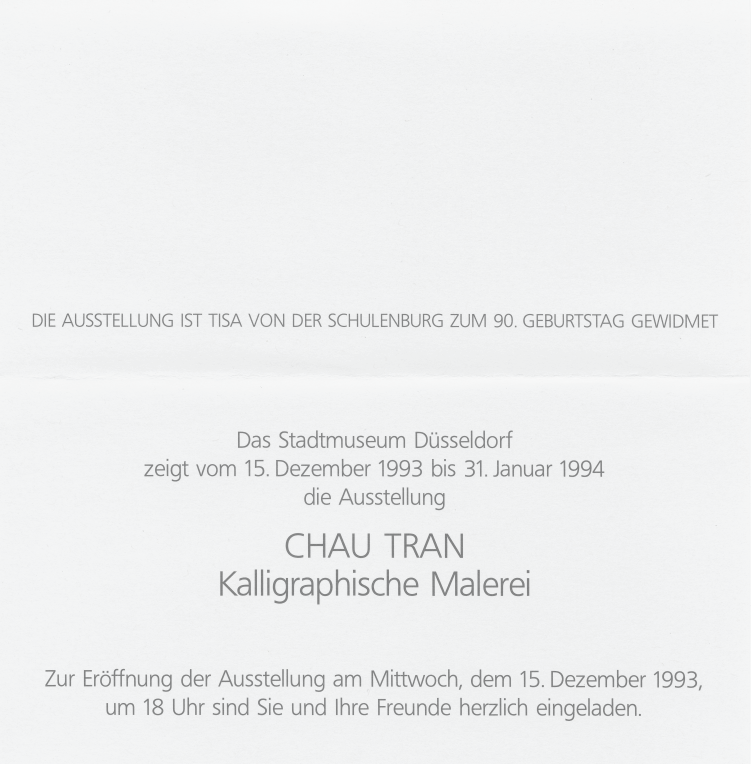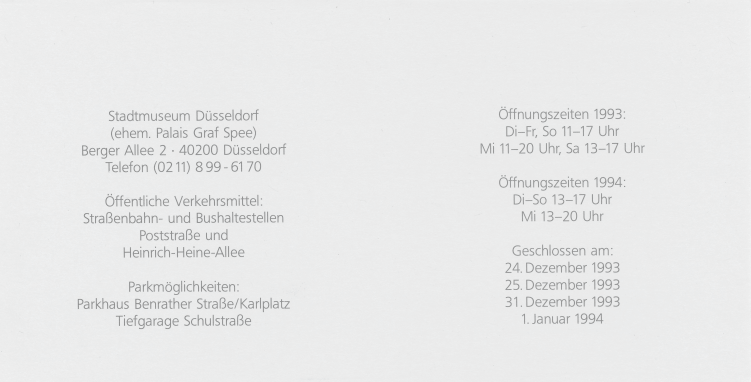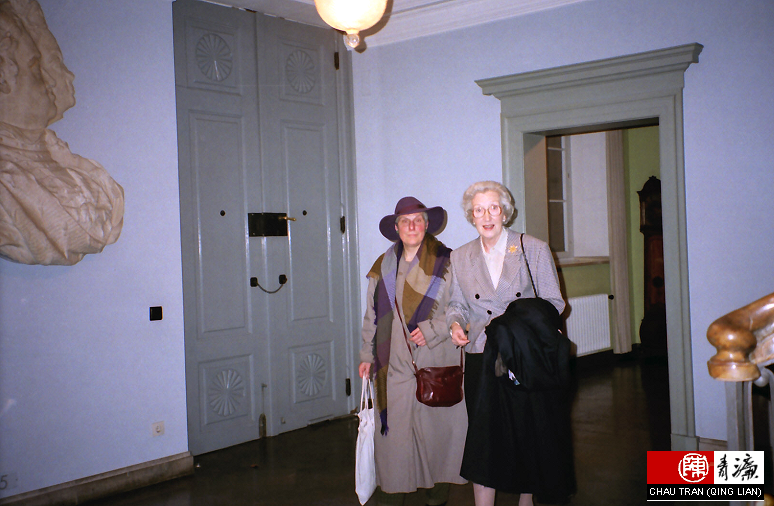
Many guests come into the Stadtmuseum Düsseldorf early for the opening.
|
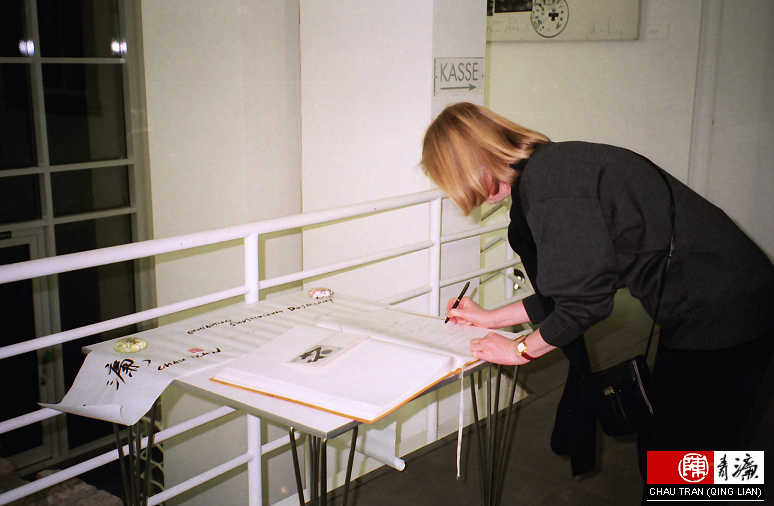
Entry into the guestbook of the Stadtmuseum Düsseldorf and into the paperroll of Chau Tran (Qing Lian).
|
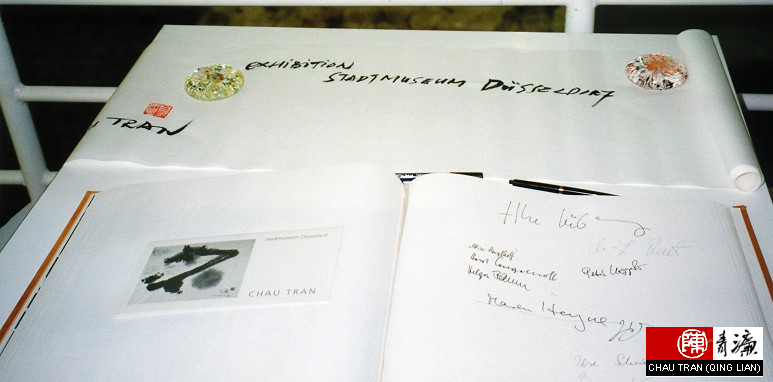
The guestbook of the Stadtmuseum Düsseldorf and the paperroll of the artist Chau Tran (Qing Lian).
|
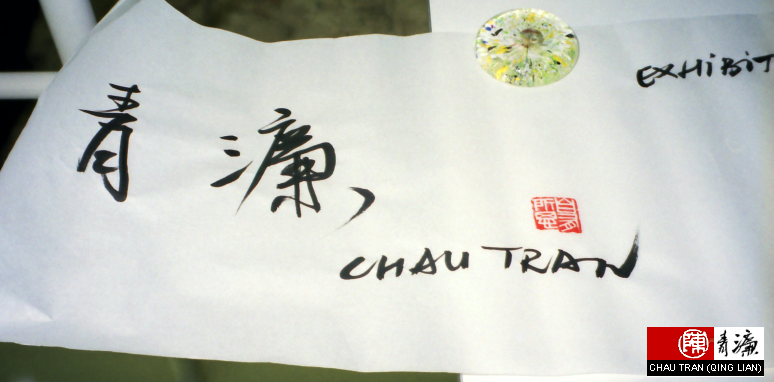
Left: "Qing Lian" in chinese characters.
|
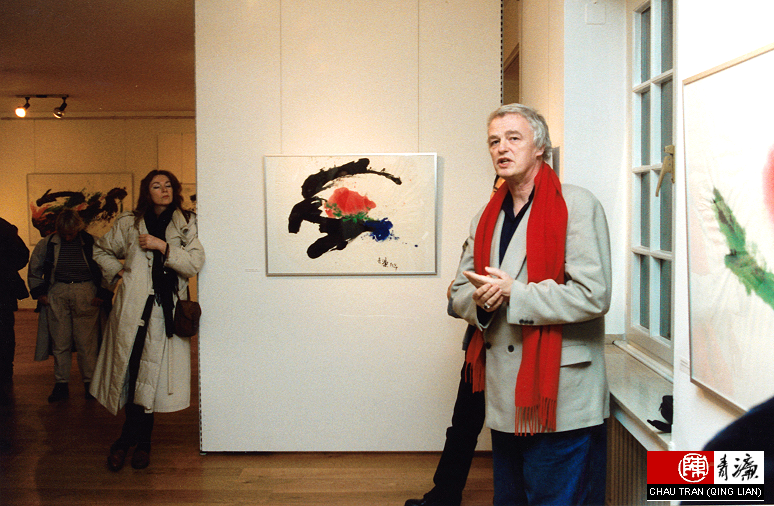
Dr. Wieland König, director of the Stadtmuseum Düsseldorf opens the exhibition of the artist Chau Tran (Qing Lian) with a honorific speech.
|
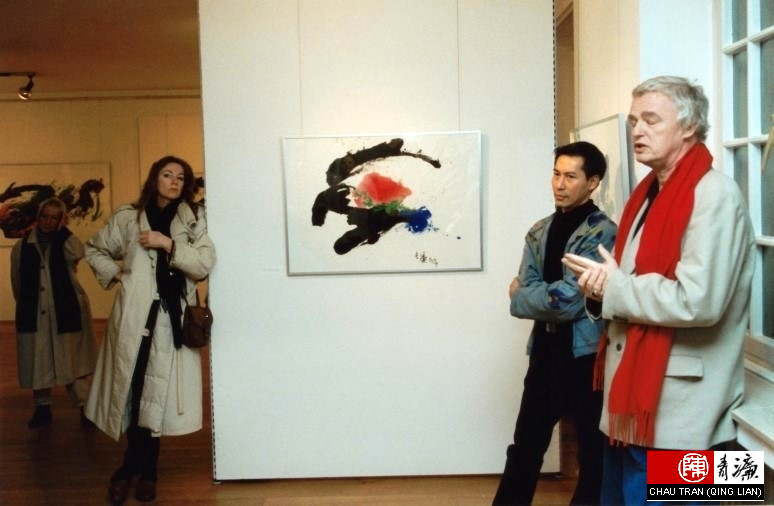
|
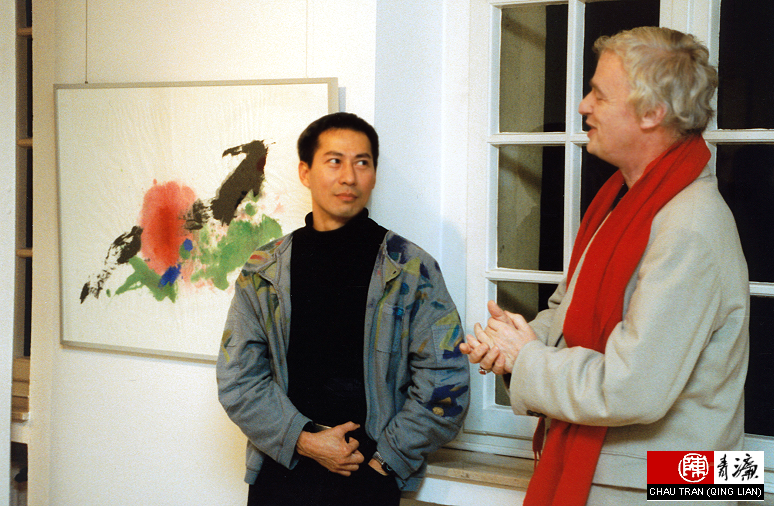
". . . . . . . . We, the Stadtmuseum Düsseldorf, are happy to welcome the excellent artist Chau Tran (Qing Lian) here in his exhibition . . . . . . . . "
|
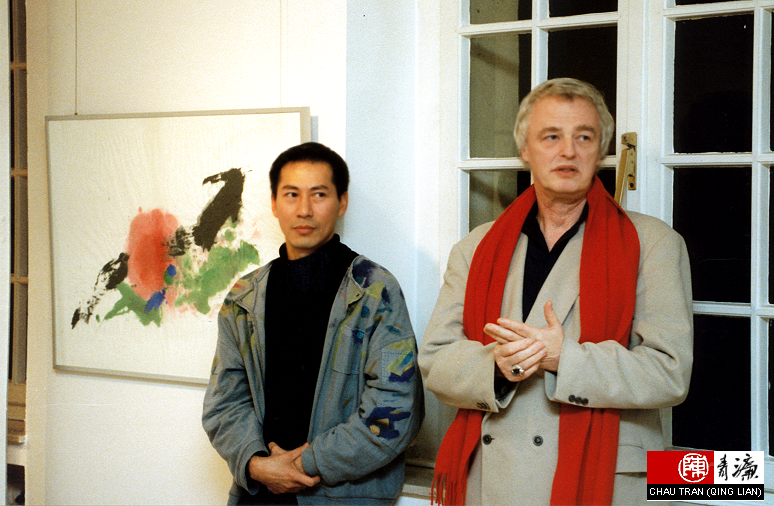
|
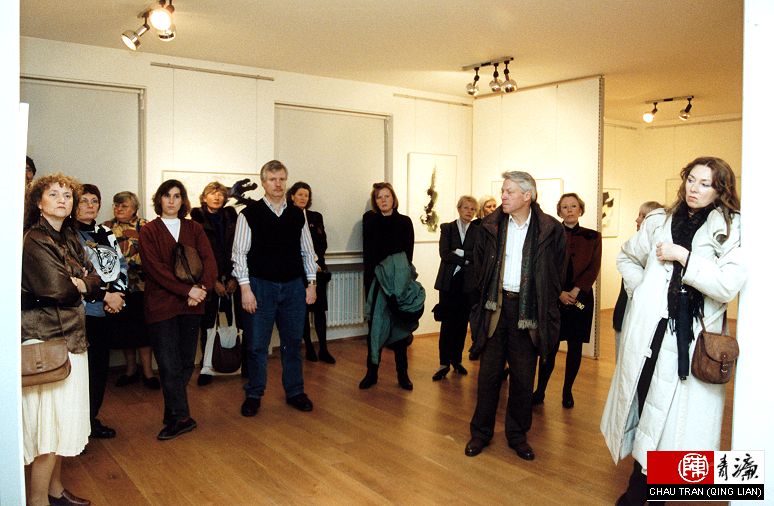
Guests of the official opening of the exhibition.
|
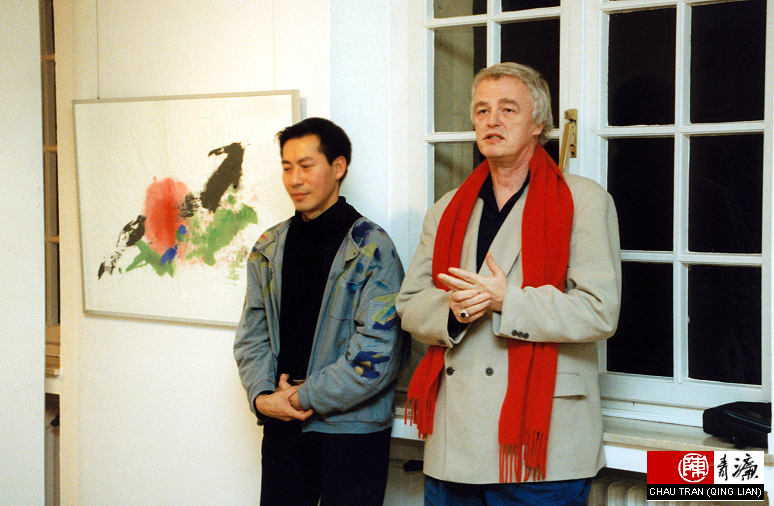
|

Left in the photo: The painting "Harvest time of feelings", middle: "Touch of spring II", right: "Touch of spring I"
|
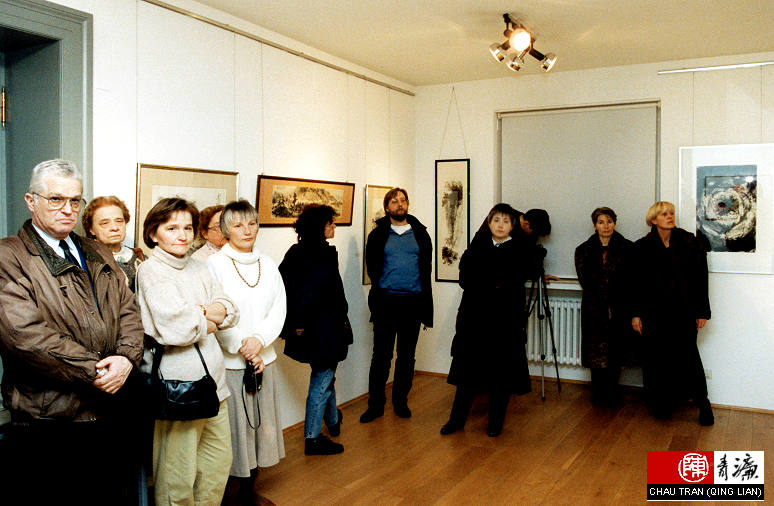
Guests of the official opening of the exhibition.
|

|
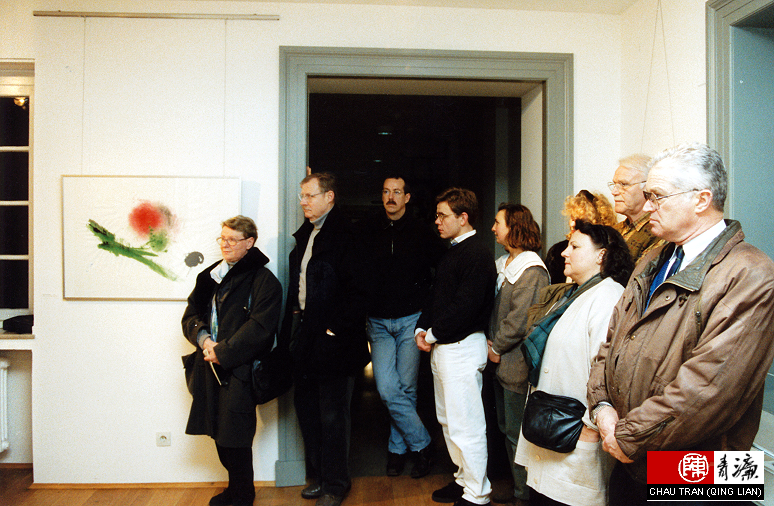
Guests of the official opening of the exhibition.
|
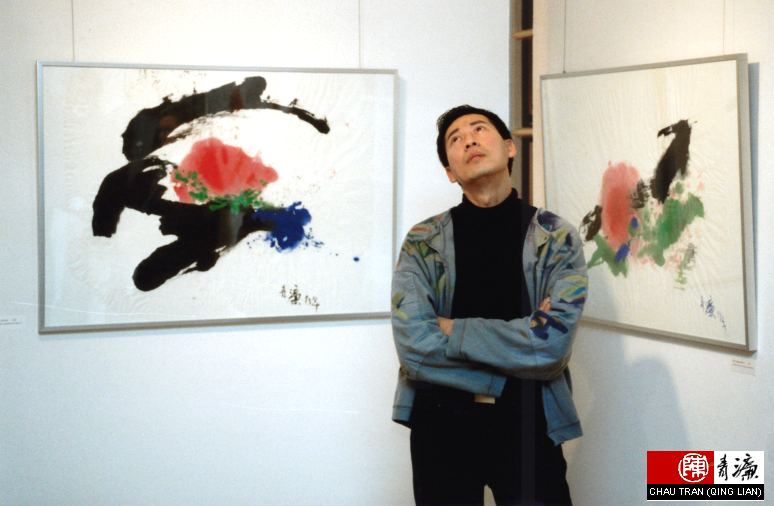
Like always and also with this occasion Chau Tran (Qing Lian) wears a selfdesigned garment, in this case a jacket with happy colours in the mood of spring. In his thoughts: "Where is spring?" A yearning: "Touch of spring II" (right side of the photo).
|
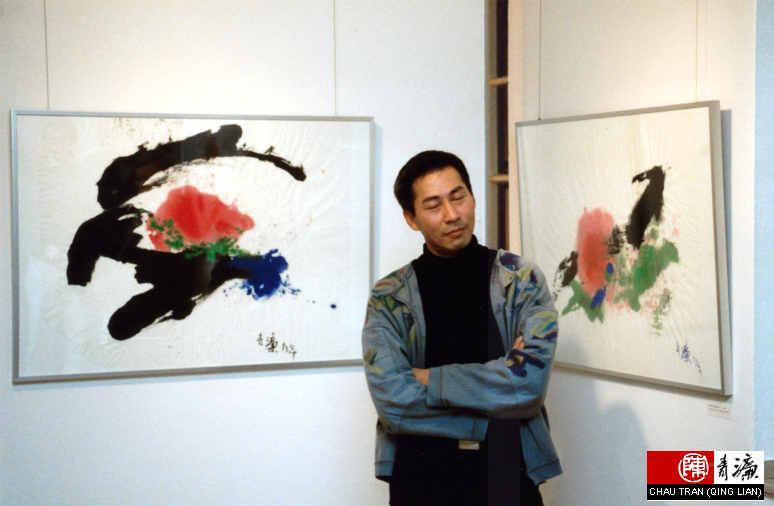
The smile of inner harmony.
|
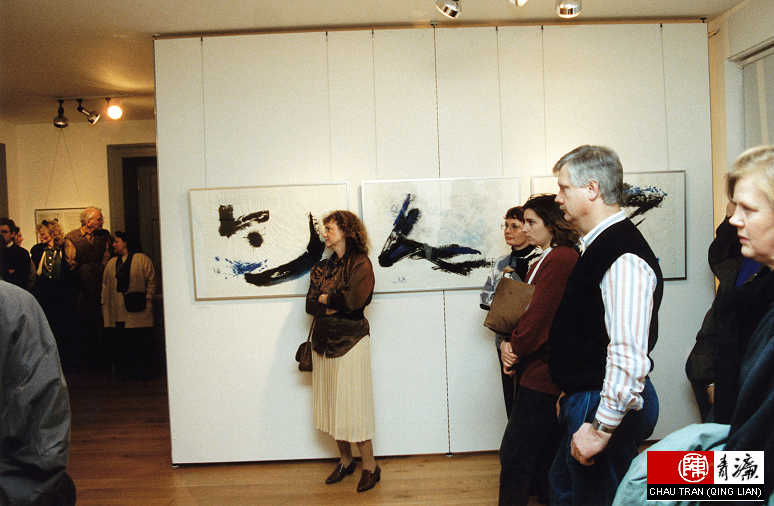
Guests of the official opening of the exhibition.
|
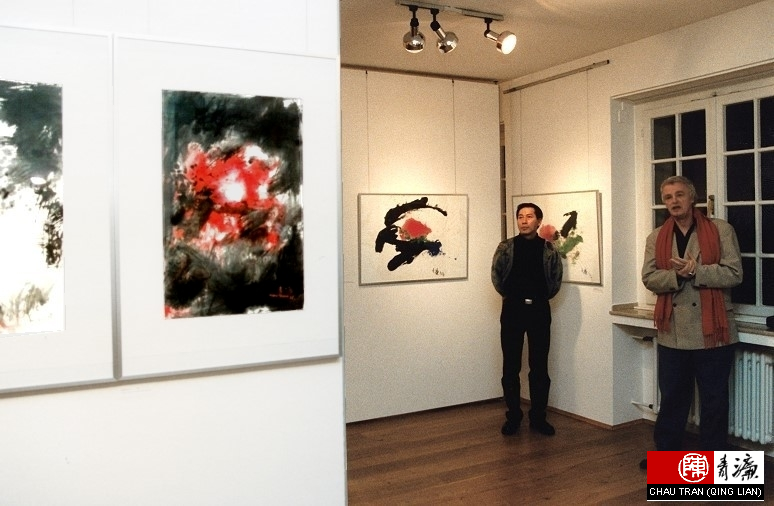
Left side of the photo: The painting "Habitat-Yearning"".
|
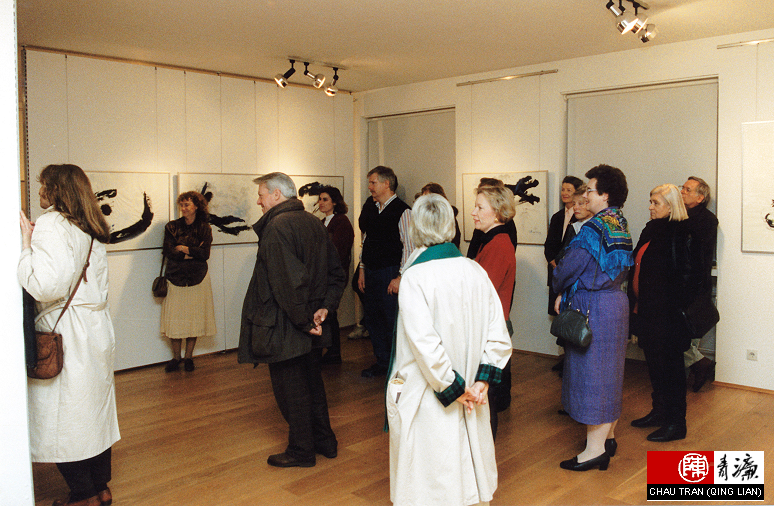
Guests of the official opening of the exhibition.
|
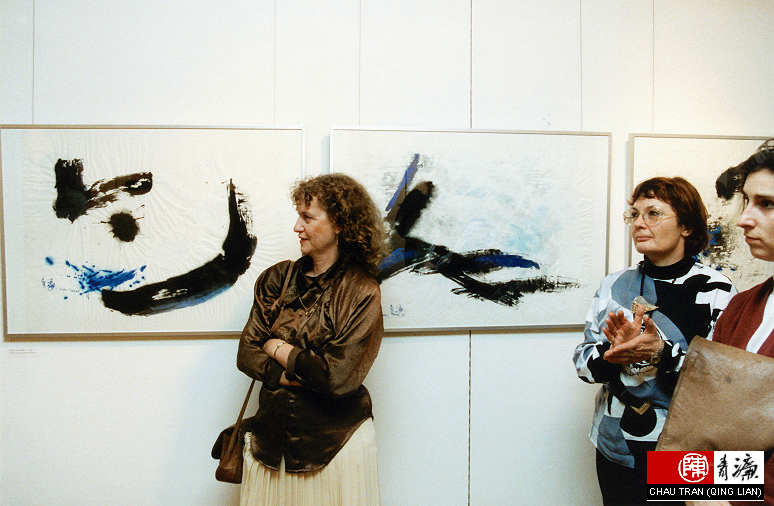
End of the honorific speech.
|
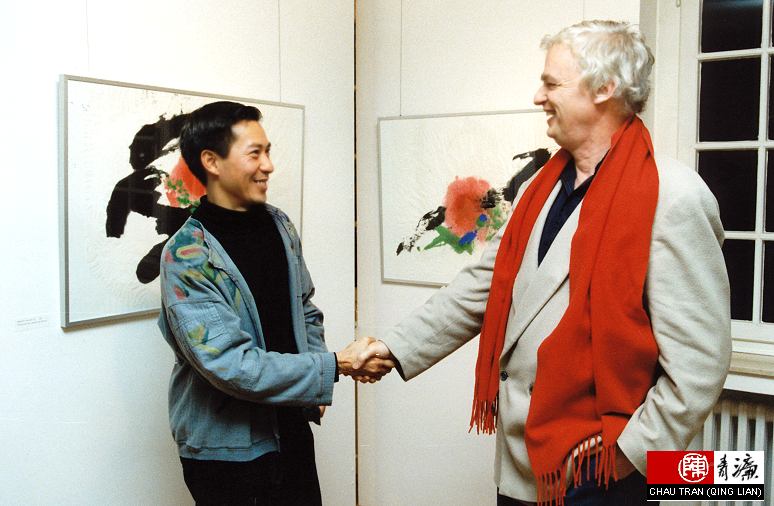
Chau Tran (Qing Lian) thanks the laudator, the director of the Stadtmuseum Düsseldorf, Dr. Wieland König.
|
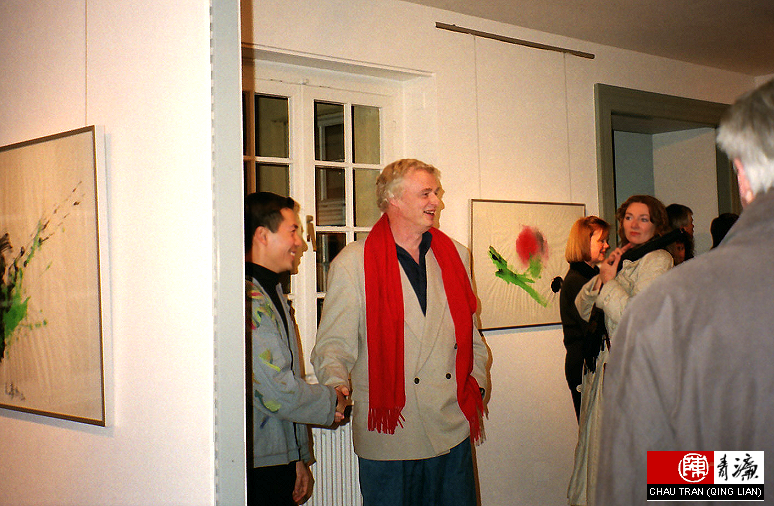
|
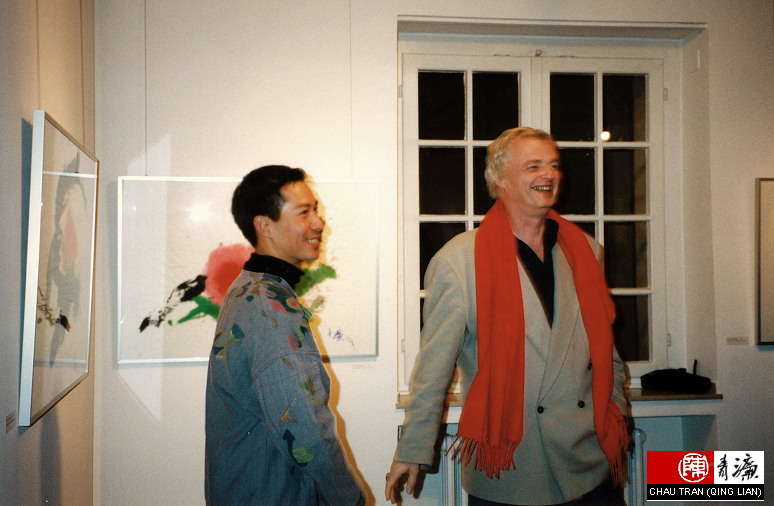
|
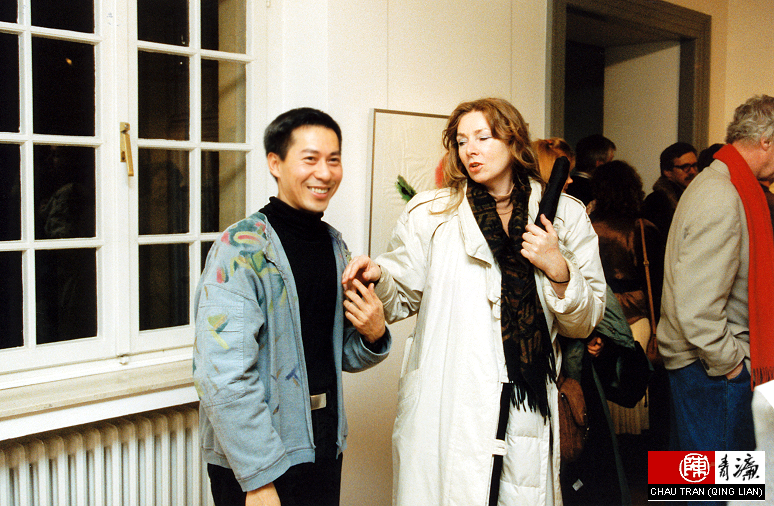
The guests congratulate the artist Chau Tran (Qing Lian) to his exhibition.
|

|
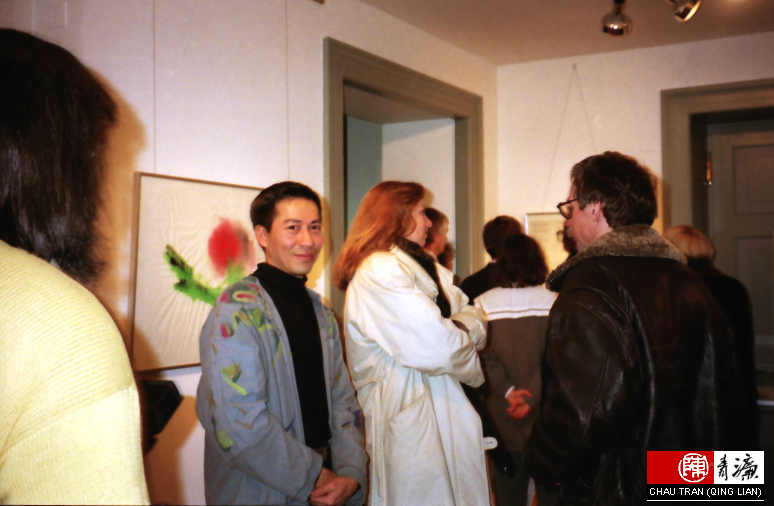
The guests in the background are reading the biography of Chau Tran (Qing Lian)
|

|
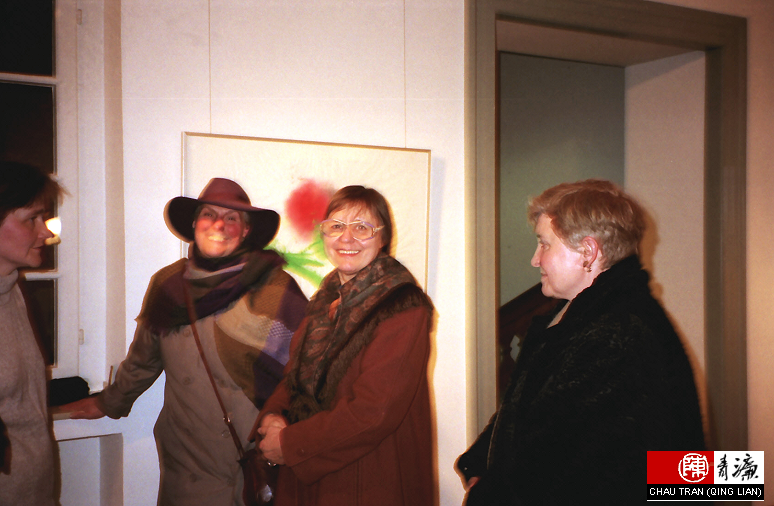
|

|
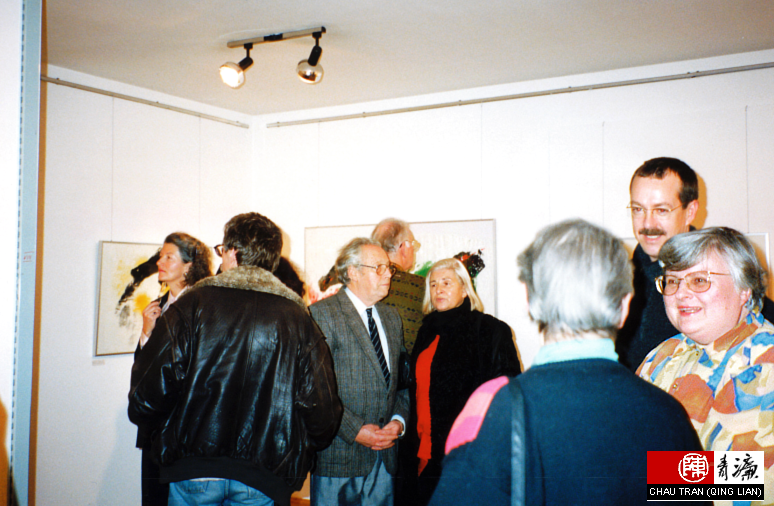
The two art historians Dr. Annette Baumeister (right) and Dr. Werner Alberg (second from right) are staff members of the Stadtmuseum Düsseldorf.
|
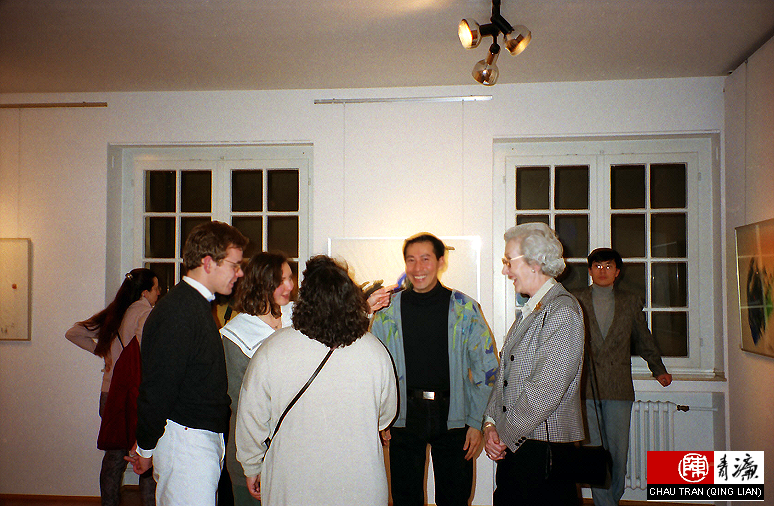
|
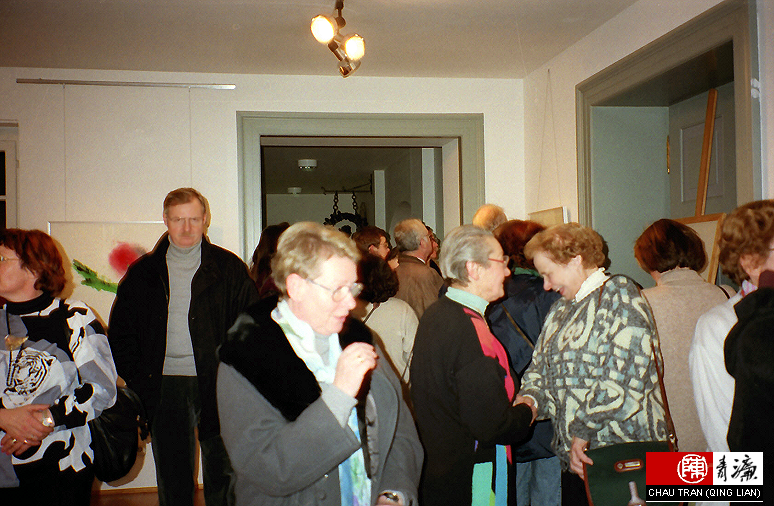
|
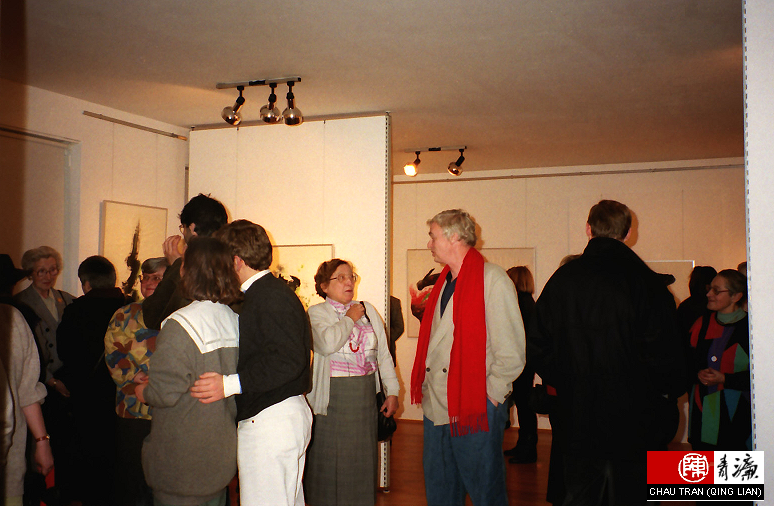
|
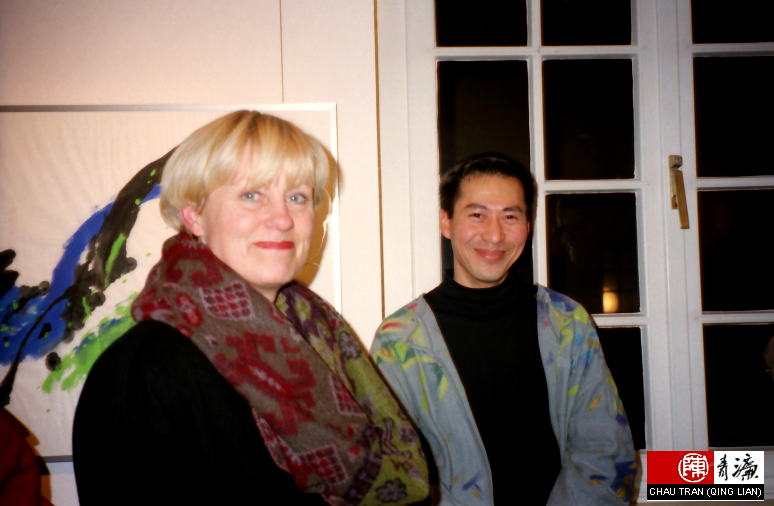
|
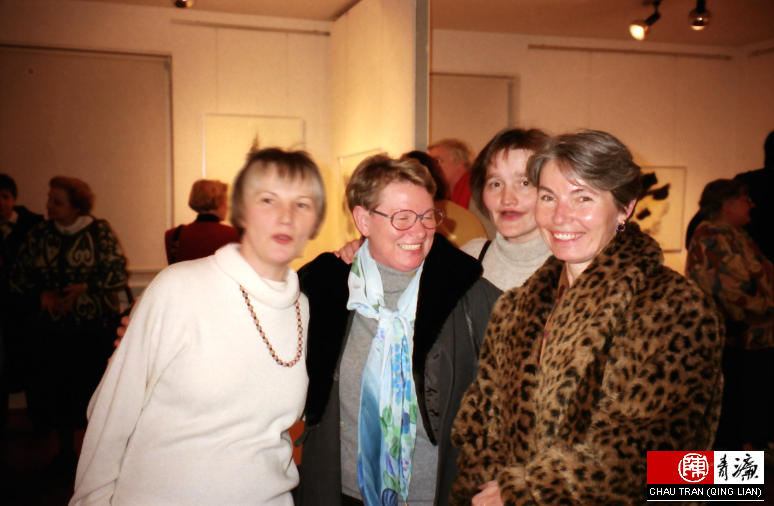
The guests are not only from Düsseldorf, but from many other cities like Essen, Bonn, Monheim, Hilden, Mettmann and from the Netherlands. Those four guests in a good mood come from Erkrath.
|
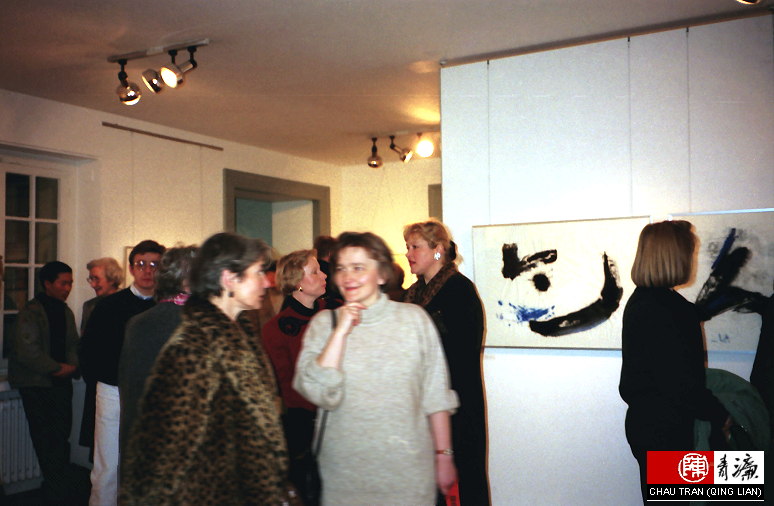
|
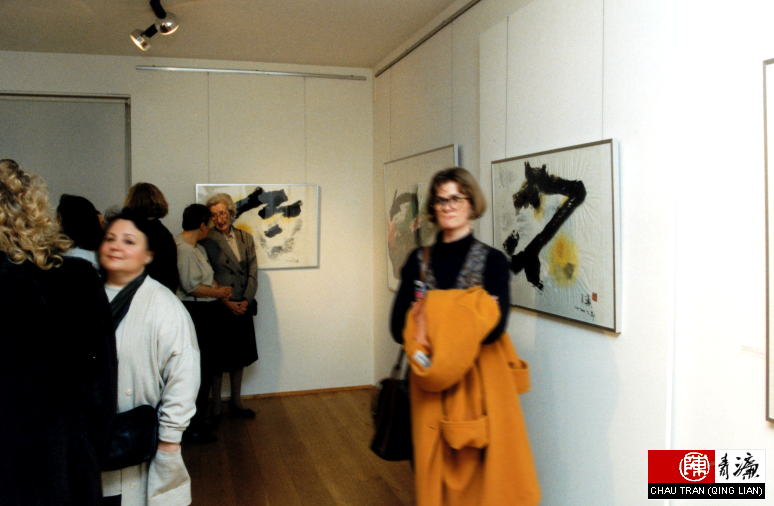
|
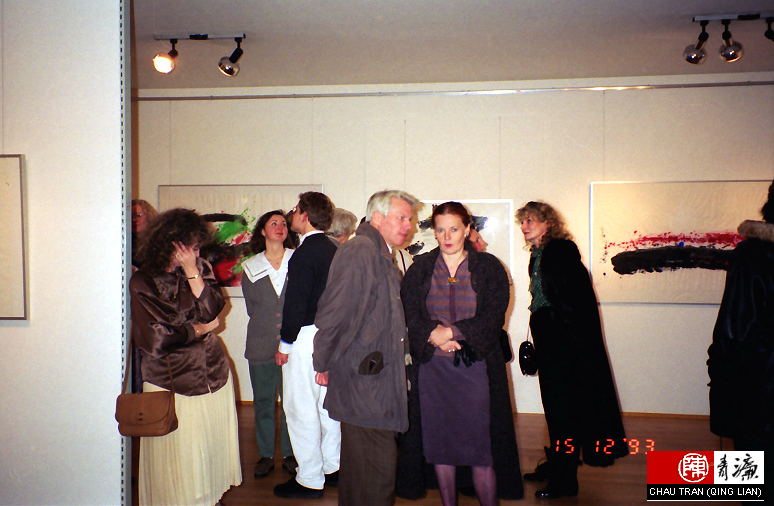
|
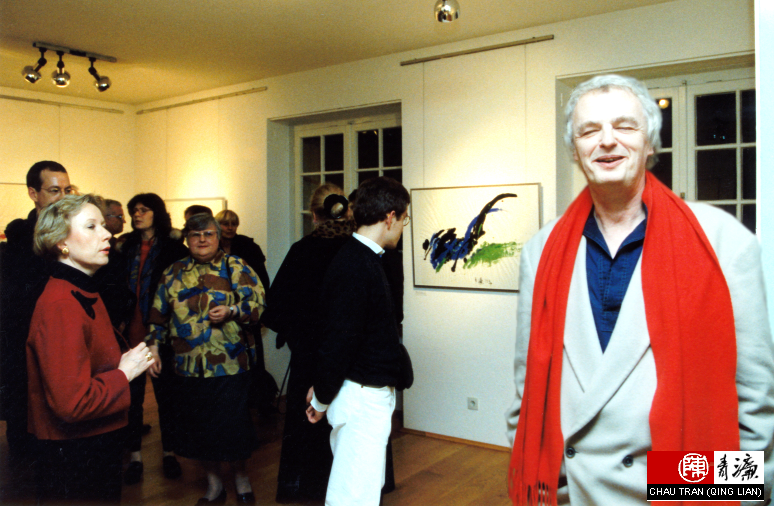
The director of the Stadtmuseum Düsseldorf Dr. Wieland König is in a satisfied mood.
|

|
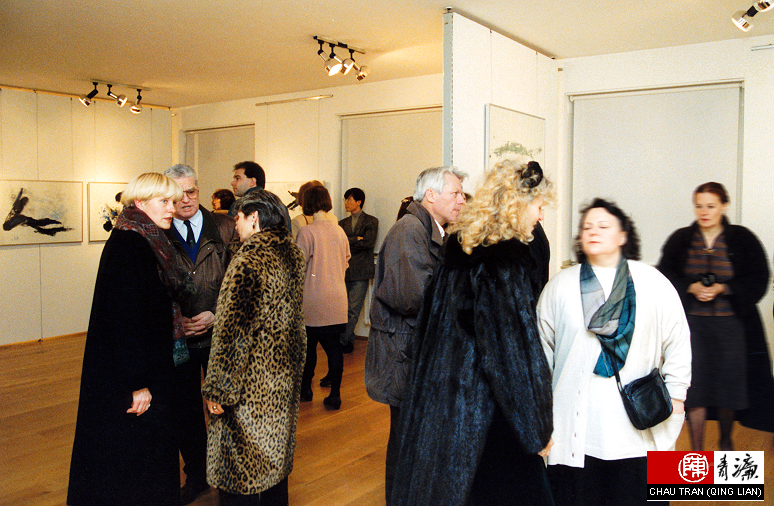
|
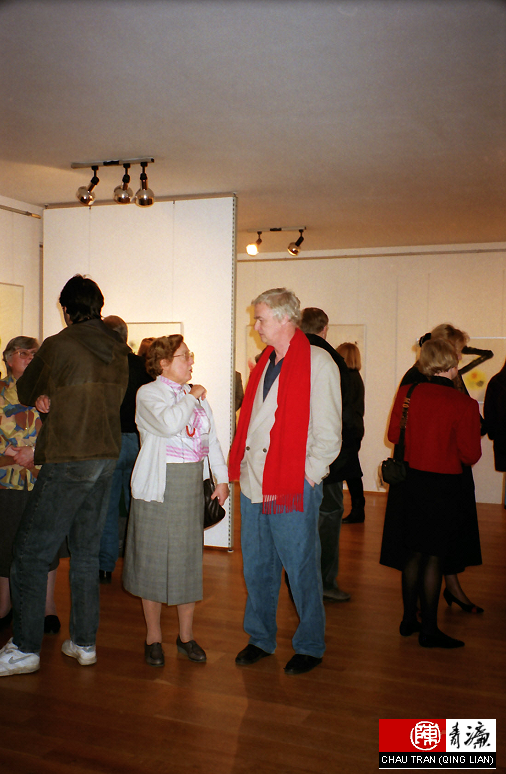
|
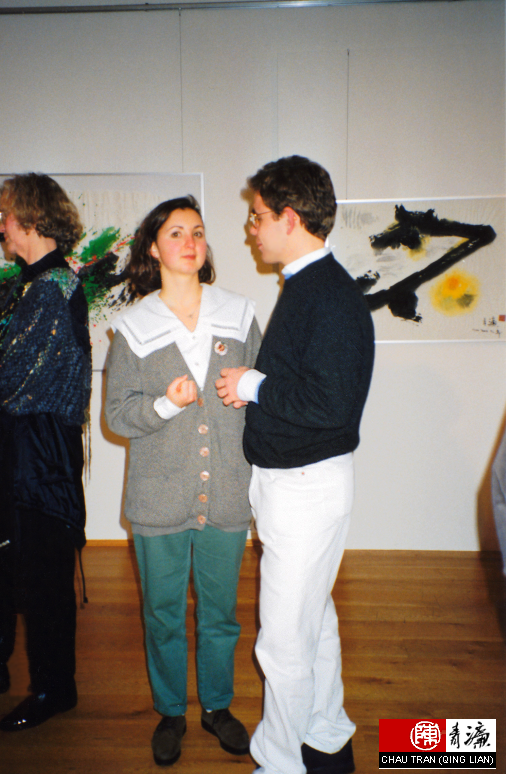
|
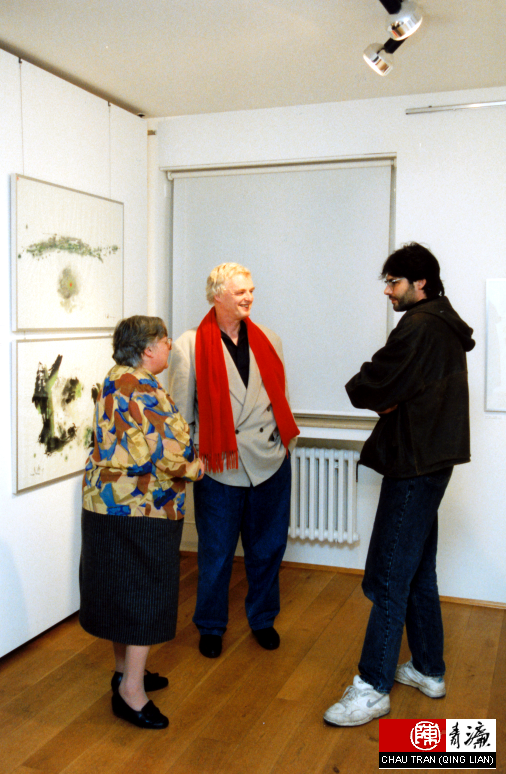
|
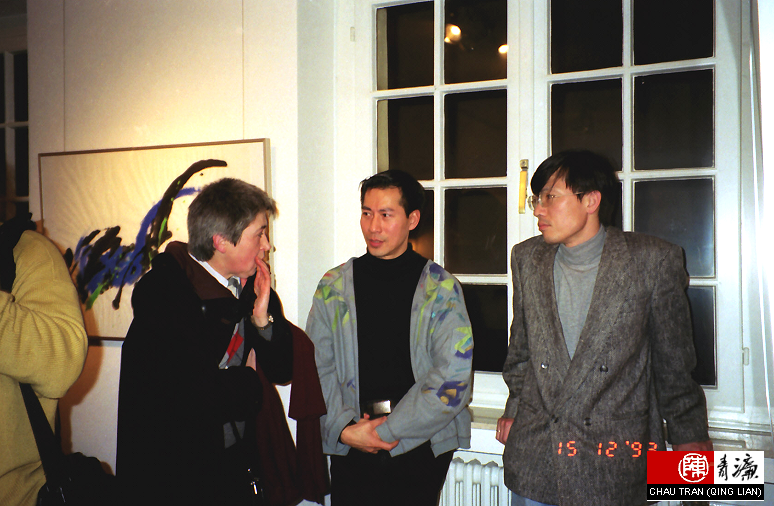
|

|
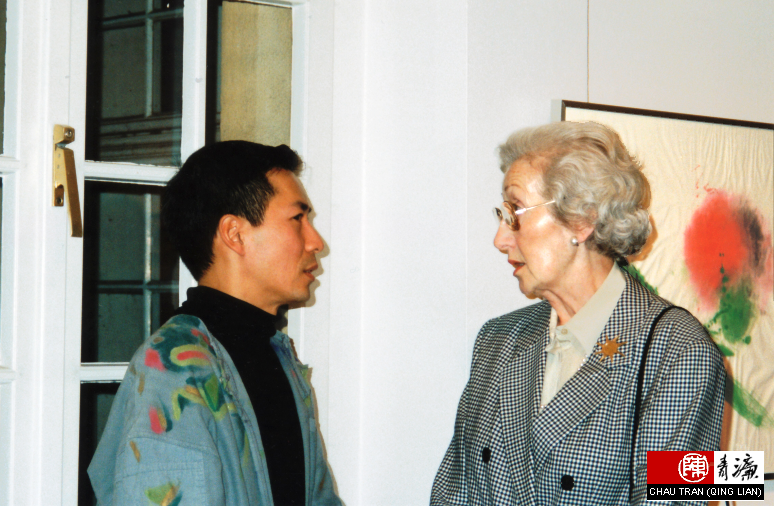
|
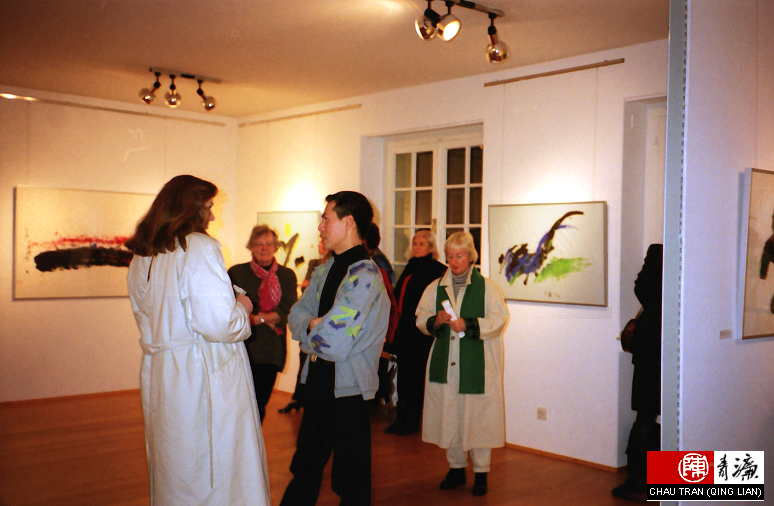
|
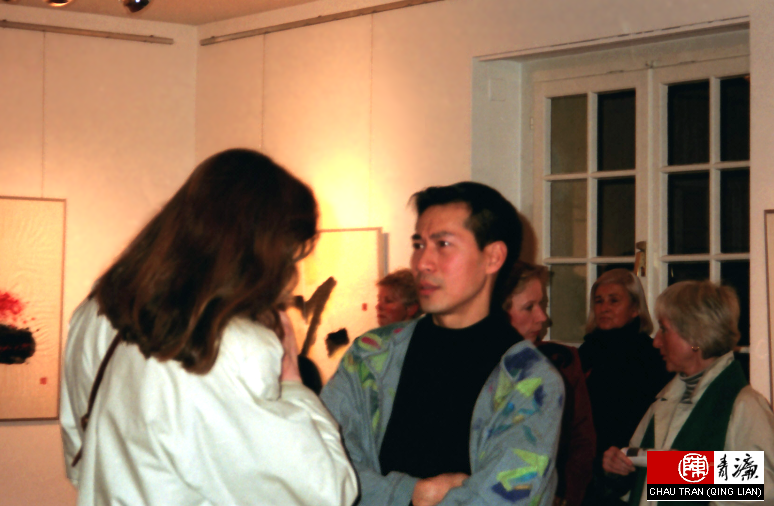
|
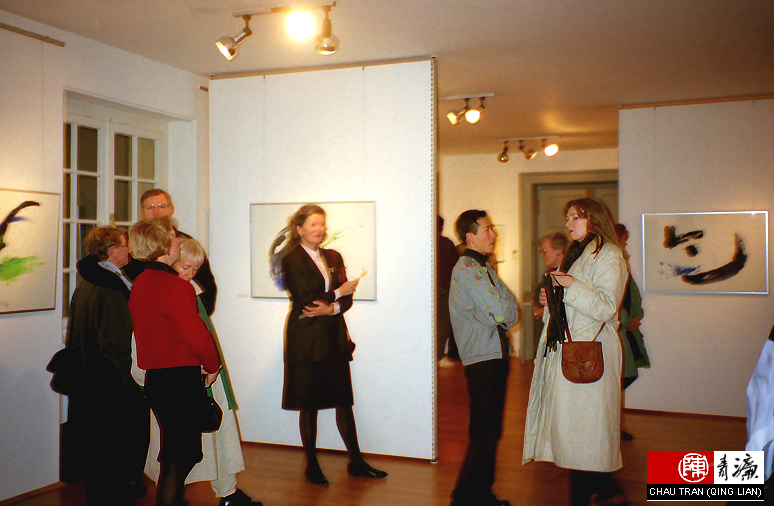
|
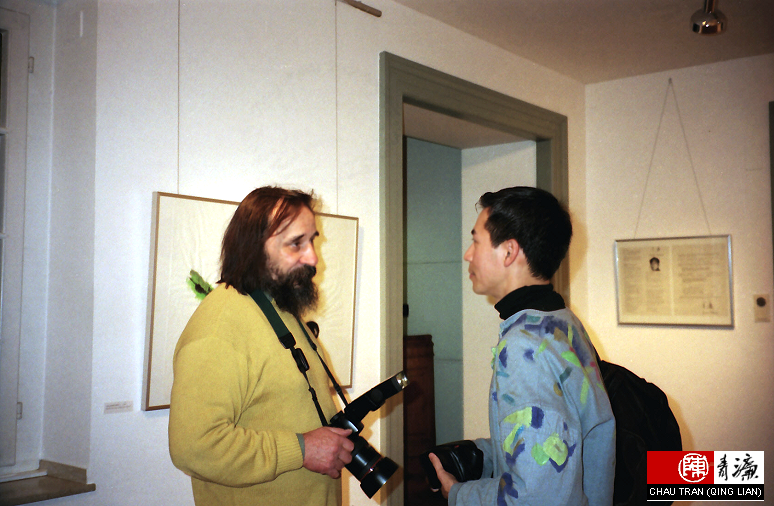
|
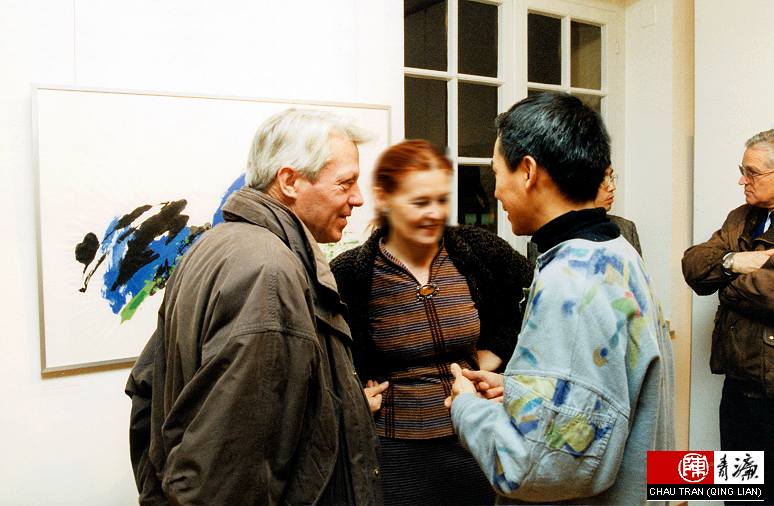
|
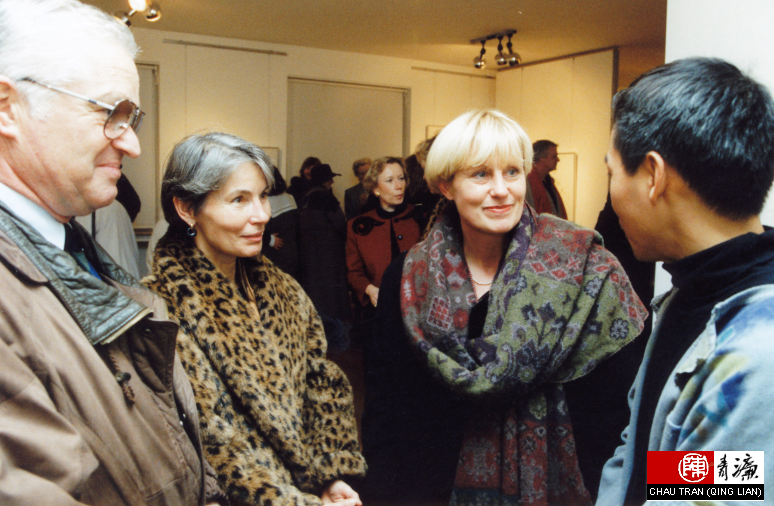
|

|
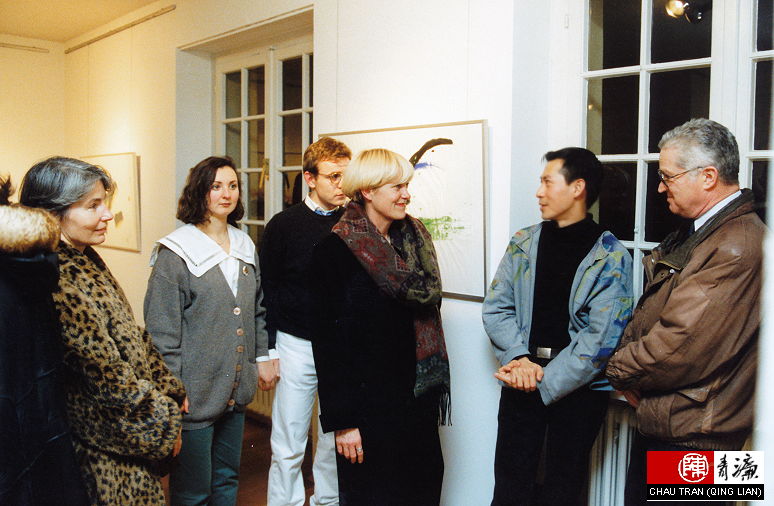
|
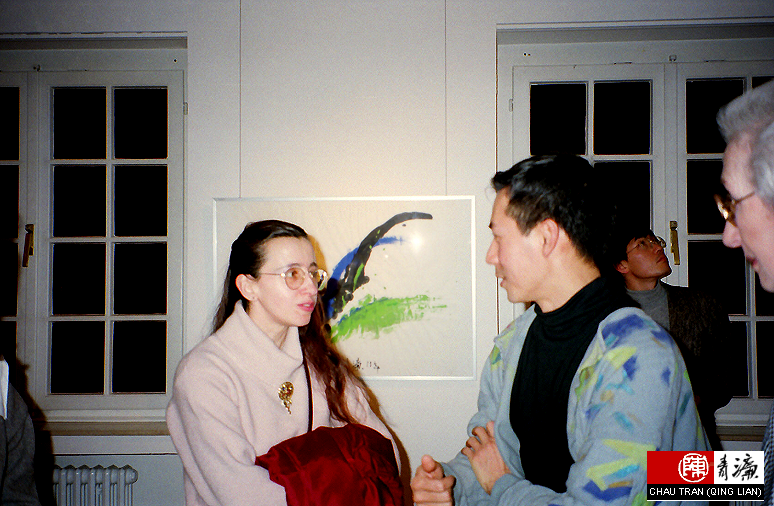
|

|
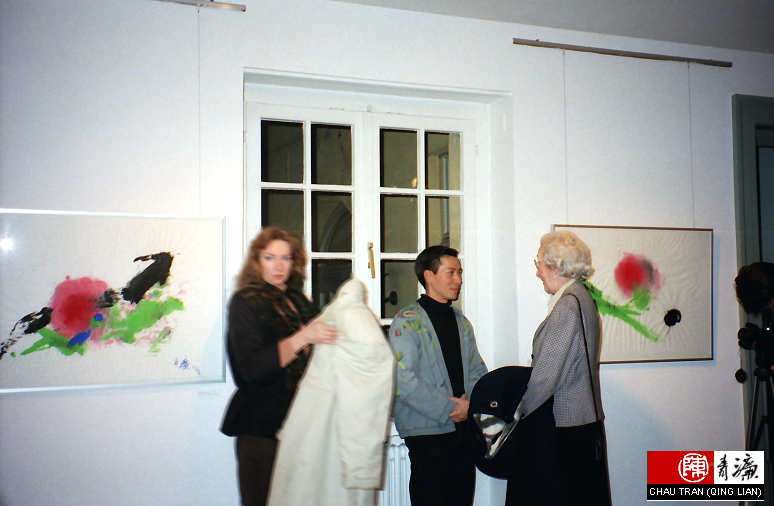
|
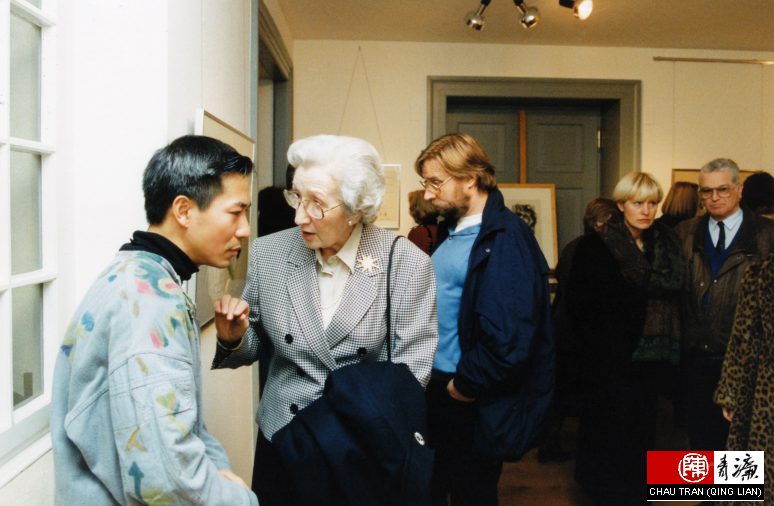
|

|
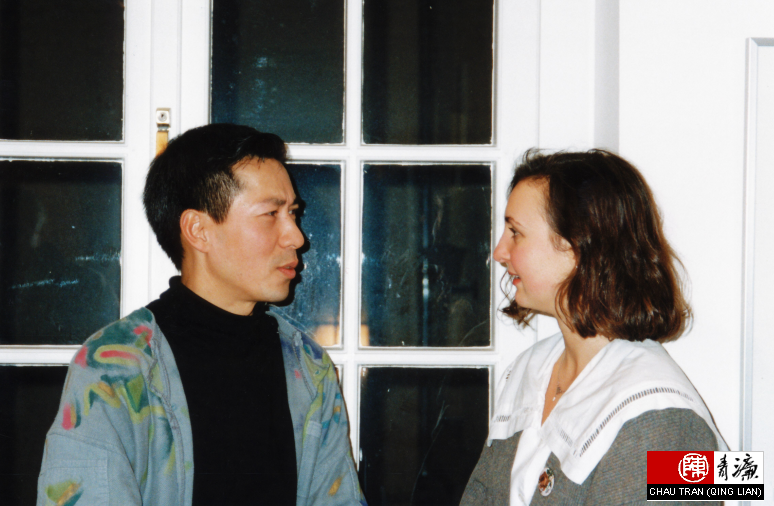
|

Chau Tran (Qing Lian) talks to the guests about the painting "Wonder (Appearance)" : ". . . . . . . . wonder happen every day around us. You have to be sensitive enough to feel them. Many people think, wonders are something unreachable, a power coming from somewhere else. That is why wonders were often misused as superstition in medicine and religion. Man alone is a wonder of nature and posesses a wonder of power.
When a man puts a mustard seed into earth, a new plant grows later, then a bud and when the bud someday opens a wonderful thing appears, that you call blossom. When you smell the blossom, there is a special scent when you close your eyes at the same time. Some blossoms later develop to something that you call fruit and which is edible and can be used as food. . . . . . . Isn't that a wonder? And you can even say, that wonders can be created by the tiny power of a single man. Everything on this earth is a wonder of nature . . . . . . ."
" . . . Nature is like it is, one shouldn't try to defeat it, but try to live in harmony with nature."
|
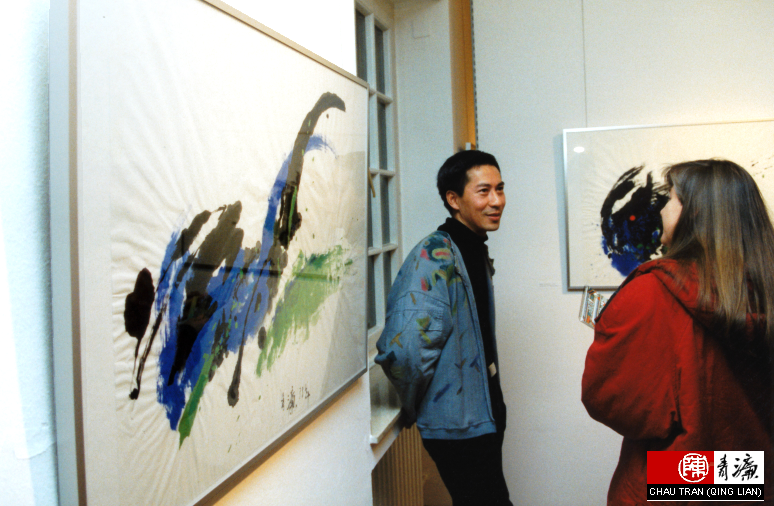
During the interview with WDR-reporter Ute May, left is the painting "Wonder (Power)"
|

In front of the painting "Wonder (Appearance)" . . . . . . . . .Chau Tran (Qing Lian): ". . . . . . Water intrudes faster and more faster into the boat. The men are abolutely exhausted, but with their last power and every possible way they try to scoop the water out of the boat back into the ocean. Suddenly they discover two more cracks close to the bottom of the boat. There the water also enters the boat. Now the old men too help, even though it is very narrow in the cabin, but regardless they try. The water rises higher and higher up to the knees of the women, who hunker down on the floor of the cabin. They hold up their children. They cry and weep and the situation becomes more and more dramatic and chaotic.
Some try to climb onto the roof of the cabin, even though we are in the middle of an ocean and with the big heat the tinroof is so hot, that you cannot put a foot on it barefooted. I have to say loud: 'Don't panic, the boat might be overturning.' From the cabin the machine operator calls me: 'Captain Chau . . .' (in Vietnam you call each other with the first name) '. . . it is at the end.' I climb out of the steering cabin and sit outside at the window pane of the cabin. I think what I still can do now. I can do nothing more. The boat will sink . . . . . . . "
|
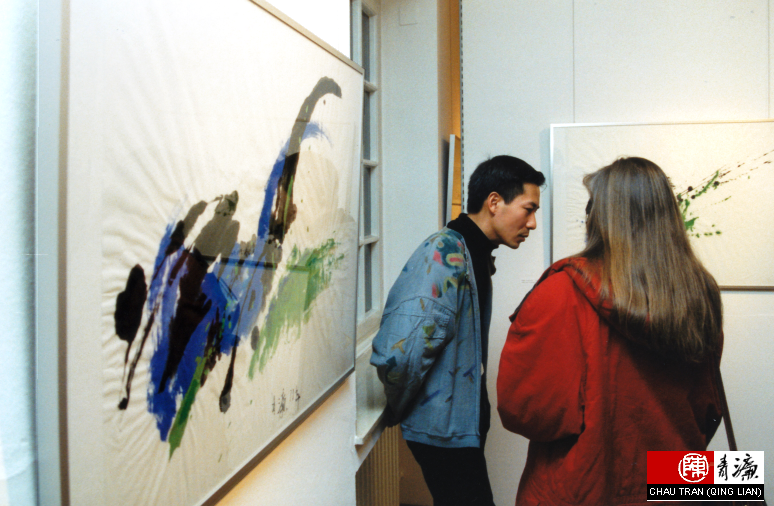
. . . . . . . . . . Chau Tran (Qing Lian) continues to tell: ". . . . . . . . . In that moment I have the thought that a fast end now would be a salvation. On malaysian mainland we were deported into a broken boat. Without food and water a malaysian marinevessel towed us into the open sea and left us alone. Originally I was the steersman and was denominated as substitute captain, because the captain distanced himself in Malaysia -
The captain, the machine operator and me were in the marine of South Vietnam earlier - I wasn't a real steersman, but an administrative clerk and worked first in the publishing house of the marine headquarter then as a secretary of the captain on two ships. Every worker on the ship had to be able to steer a boat, but now in a situation like this nobody can control a boat.
In this burning heat in the middle of the open ocean I suddenly see on the horizon, how a small dark spot of clouds slowly broadens.
A dragon whirl (asian word for tornado) arises. I quickly decide not to inform the people, to avoid a panic, I am awaiting death.
In the moment before death I have no more fear, strangely enough one is more brave when facing death. A girl, that has climbed the roof before, slowly moves towards me and sits down next to me. I ask her (in chinese): 'Do you know the song "Qing Chun Wu Qu / dancing song of youth"?' I learned this song in primary school already. She answers: 'Yes.' I begin to sing the first verse: 'The sun sets behind the mountain and tomorrow it will rise again.' The girl joins me with the second verse and together we go on with singing. Originally this is a happy song, but we sing very slowly and gentle, because both of us are very exhausted. Our heads lean against the window pane and we look up into the sky. Slowly and exhausted I turn my head to the left und I suddenly see a black spot on the horizon. While we go on singing I follow it intensely. The spot becomes larger and larger, until I suddenly recognize it and shout out very loud: 'A ship, a ship'. . . . . . . . ."
|
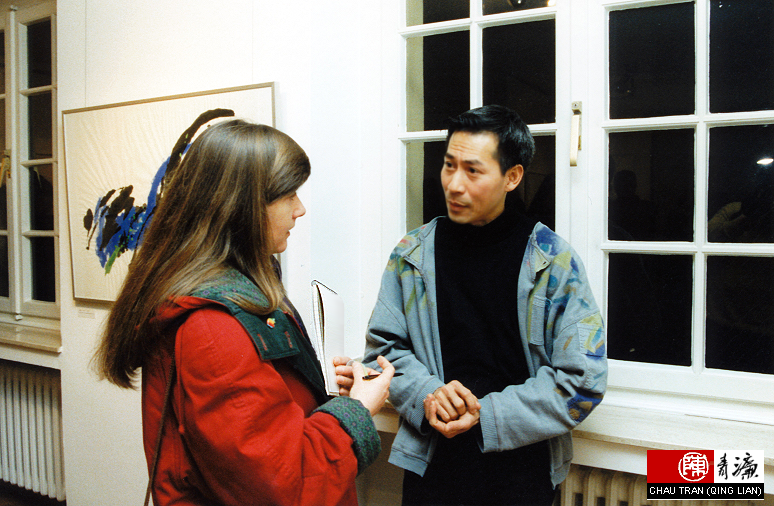
The reporter asks: "Was that the Cap Anamur from Germany?" Chau Tran (Qing Lian): "No, that wasn't the Cap Anamur. It happened right in front of the malaysian coast in international waters and not in front of the vietnamese coast." The reporter: "Have you been saved from the boat?" Chau Tran (Qing Lian) continues the story . . . . . . . . . . . .
|
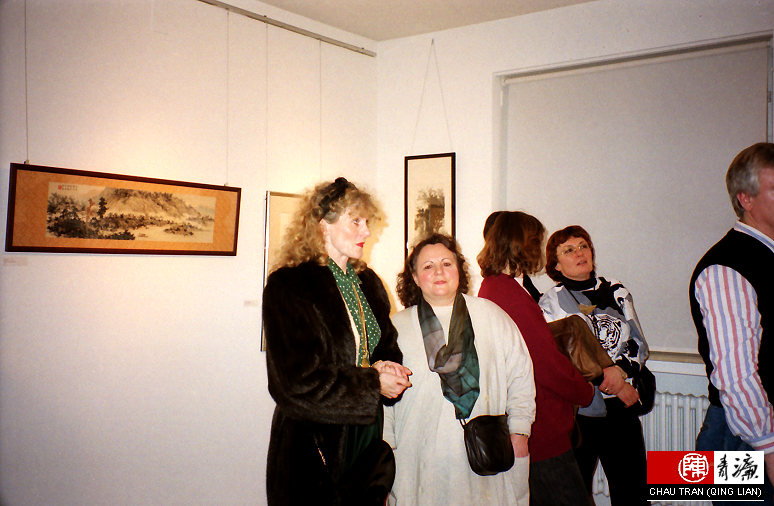
On the left side of this room four traditional chinese paintings are presented, which arose between the years 1969 and 1971 . . . . . . . . . . . . . .
|
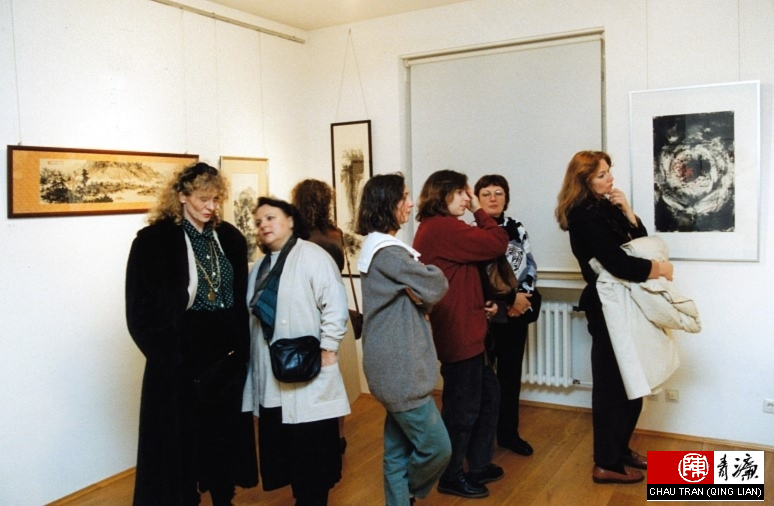
. . . . . . . . . . . . on the right side six paintings of the series "Habitat - Yearning" are presented, originating from the year 1988.
|
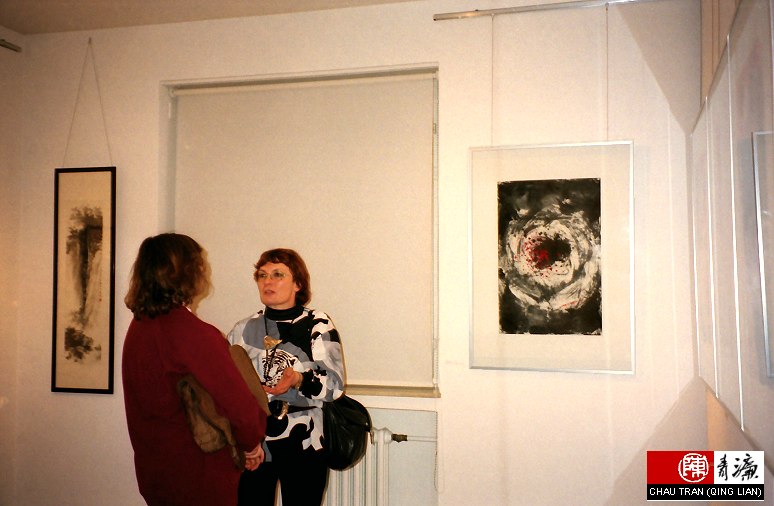
|
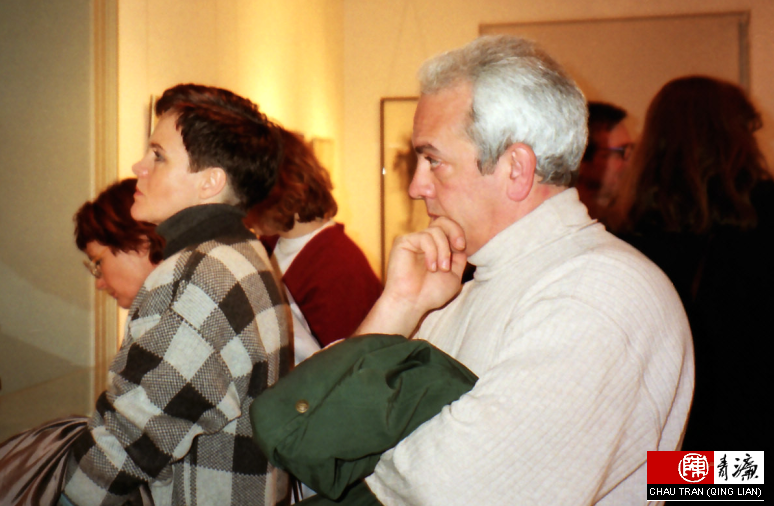
These guests focus the traditional paintings of Chau Tran (Qing Lian).
|
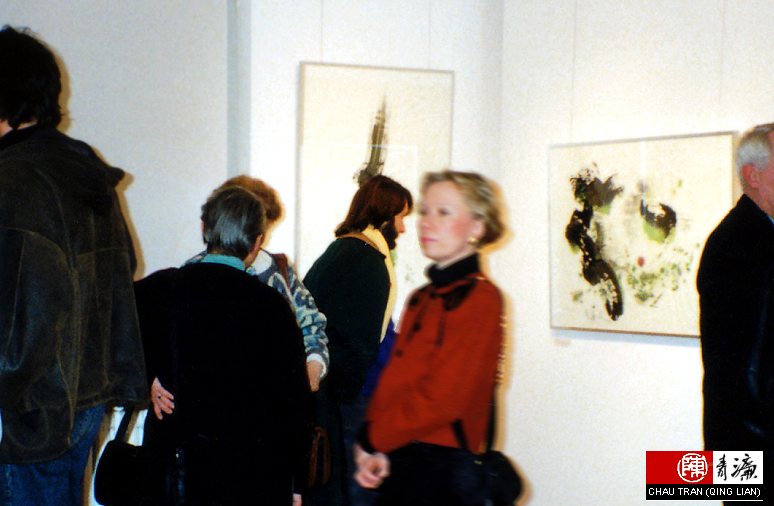
In front of the two paintings "Spreading wisdom" (left) and "Energy of wisdom" (right)
|

|
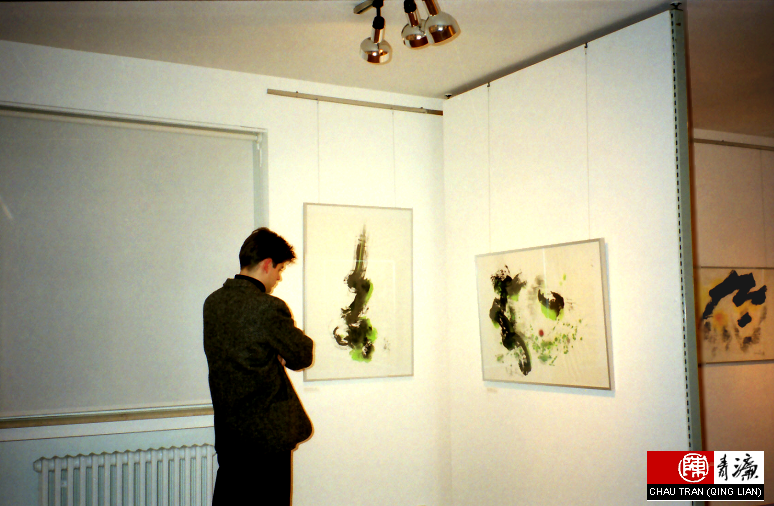
|
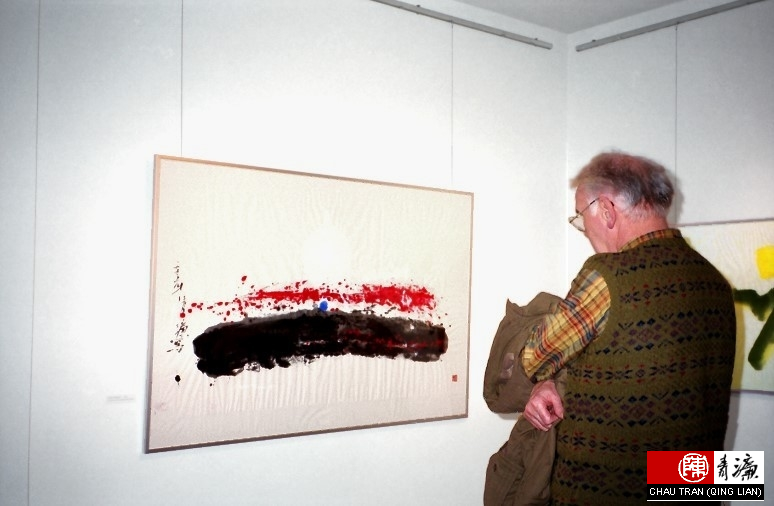
"Landscape of feelings"
|
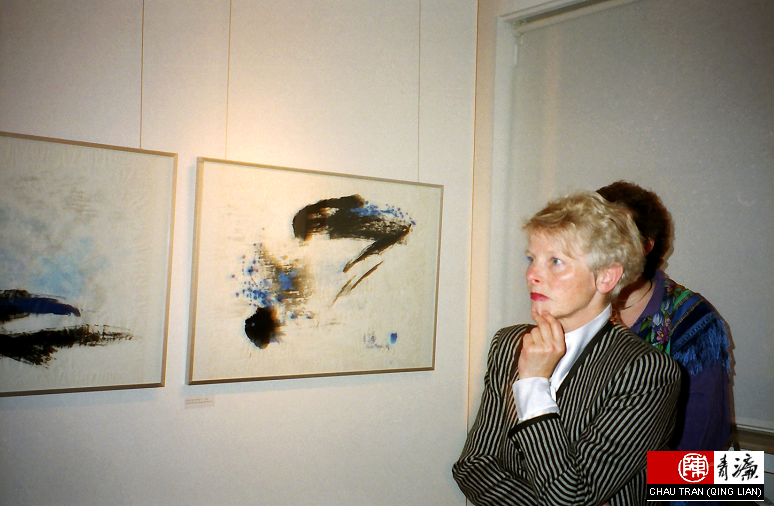
|
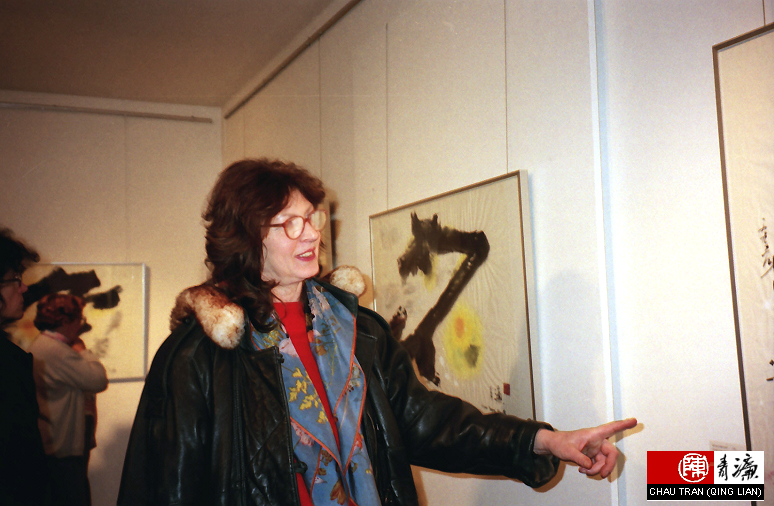
|
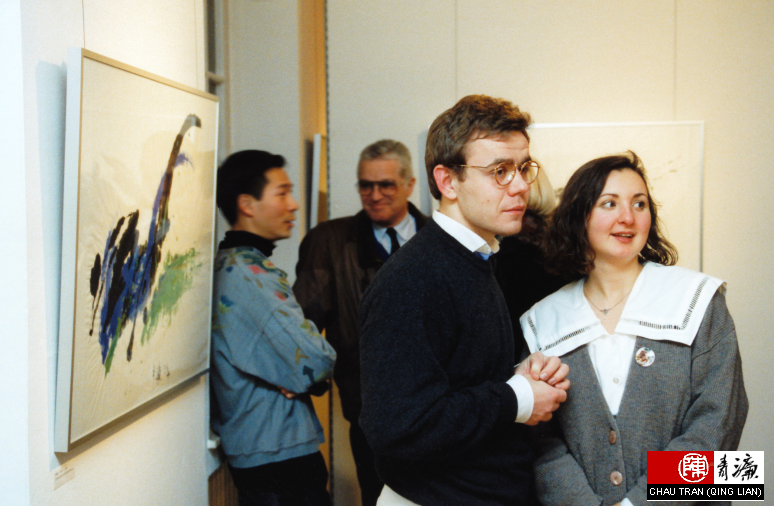
|
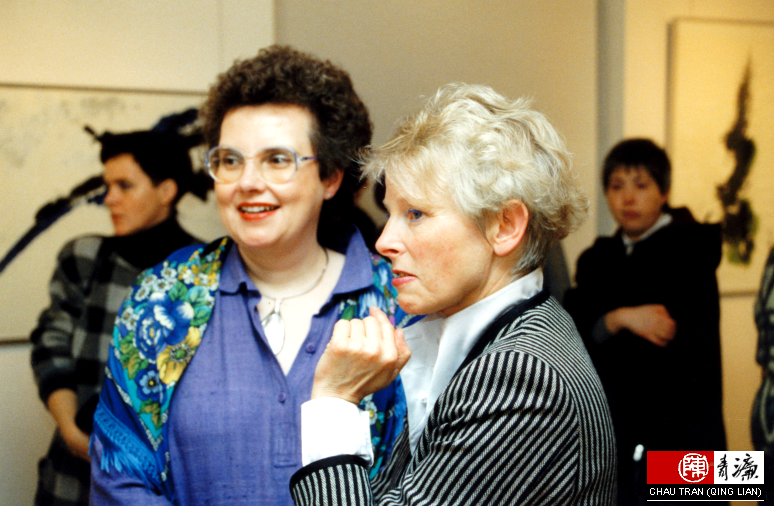
|
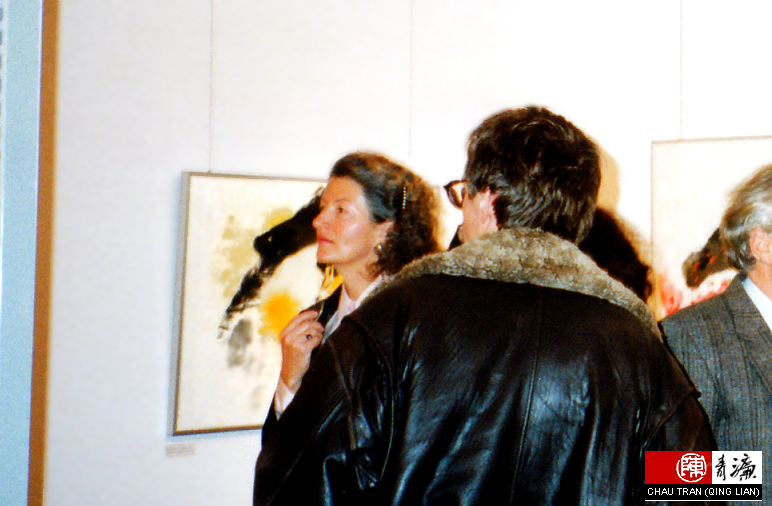
|
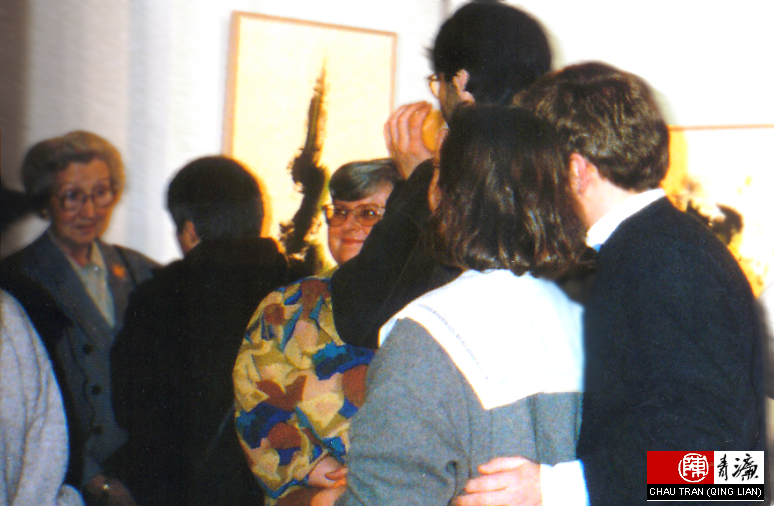
|
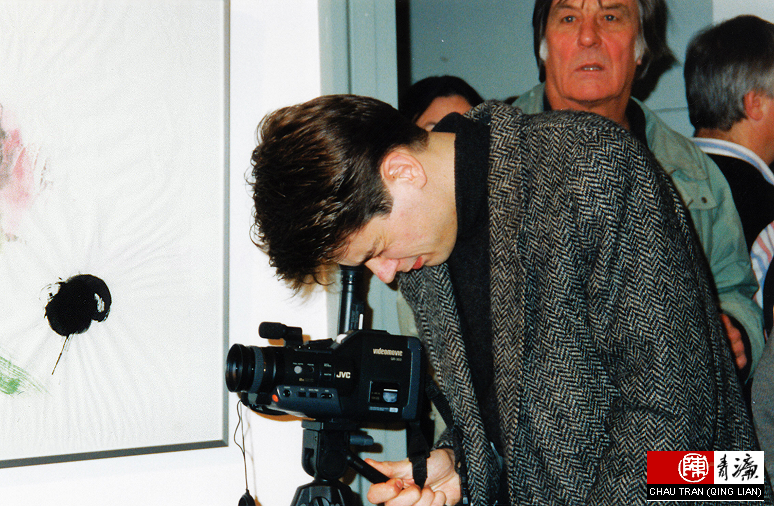
|
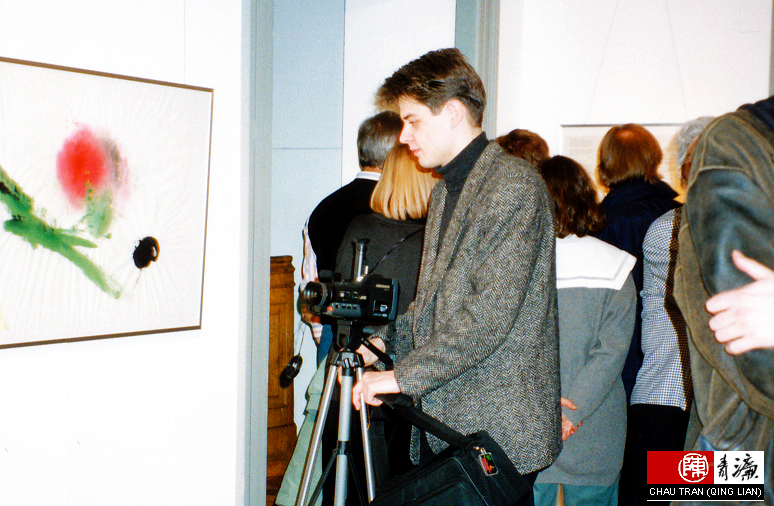
Left "Touch of spring". The guests in the background just read the biography of Chau Tran (Qing Lian)
|
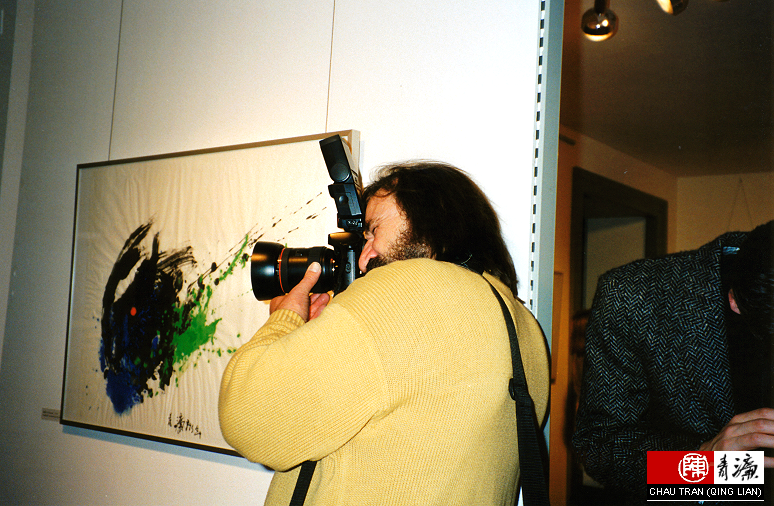
|
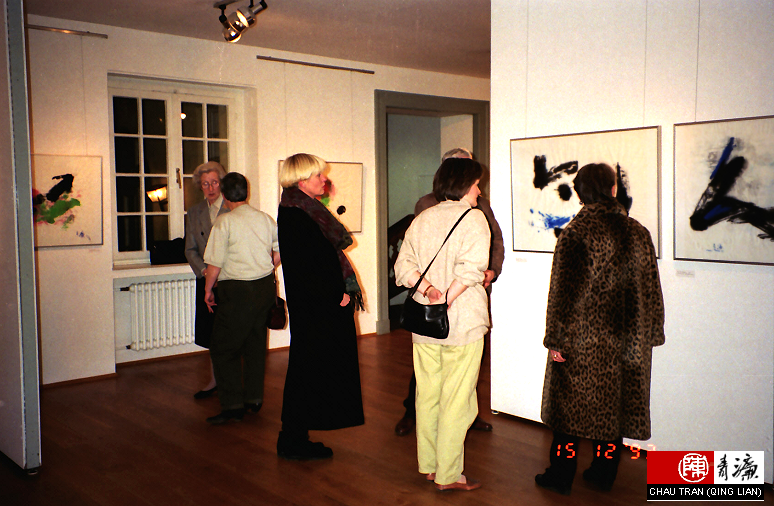
|
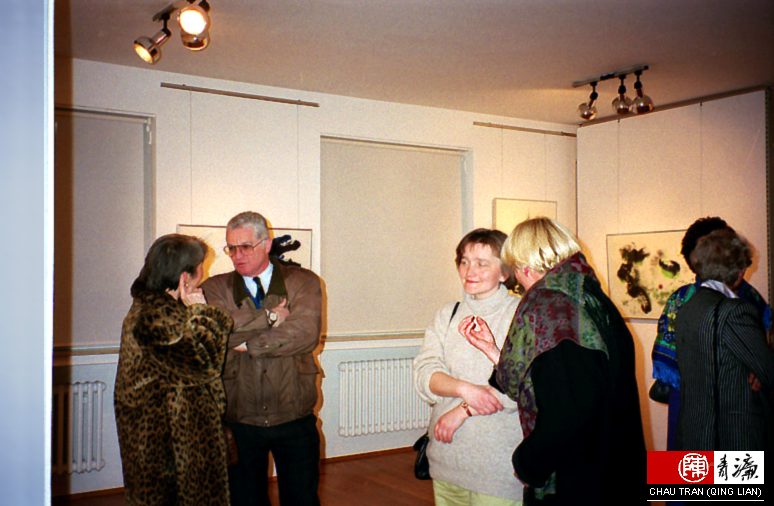
|
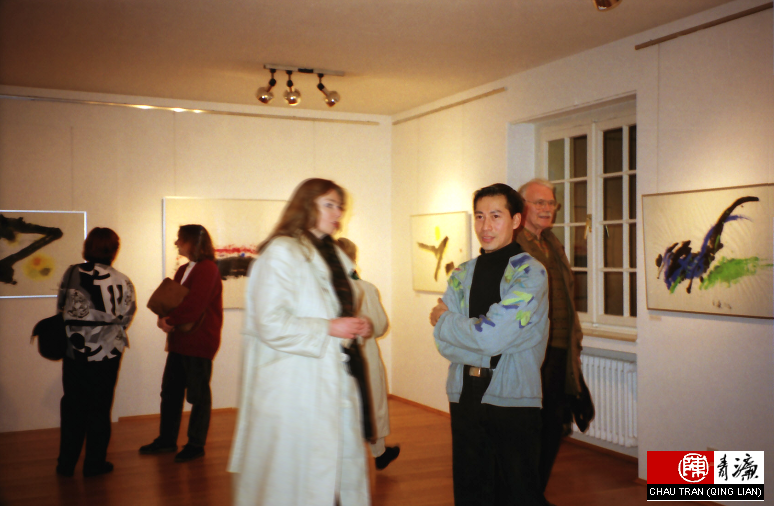
|
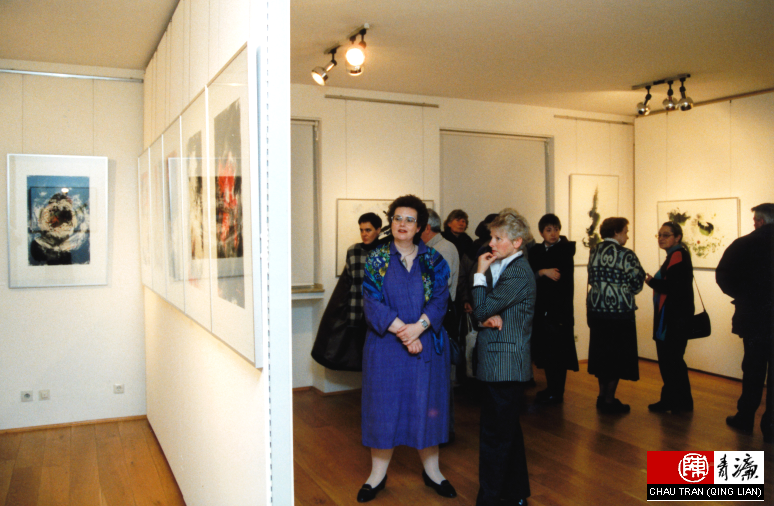
|
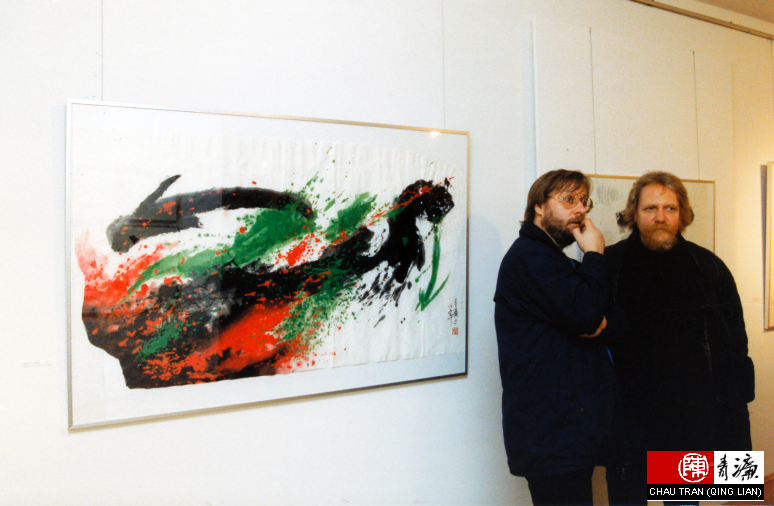
Left "Stream of yearning"
|
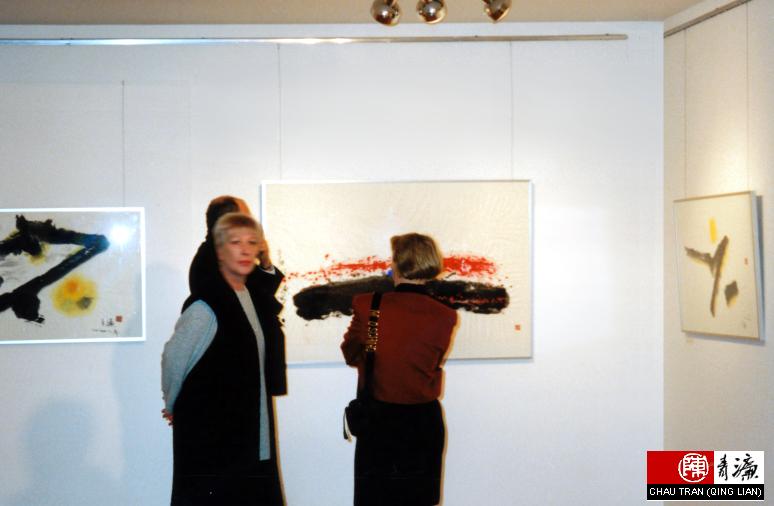
|
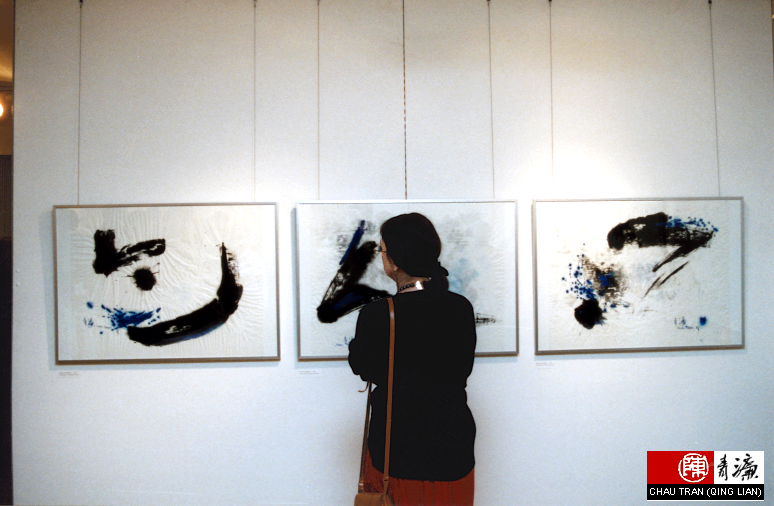
She silently watches the series "Feeling of hope/Power of hope"
|
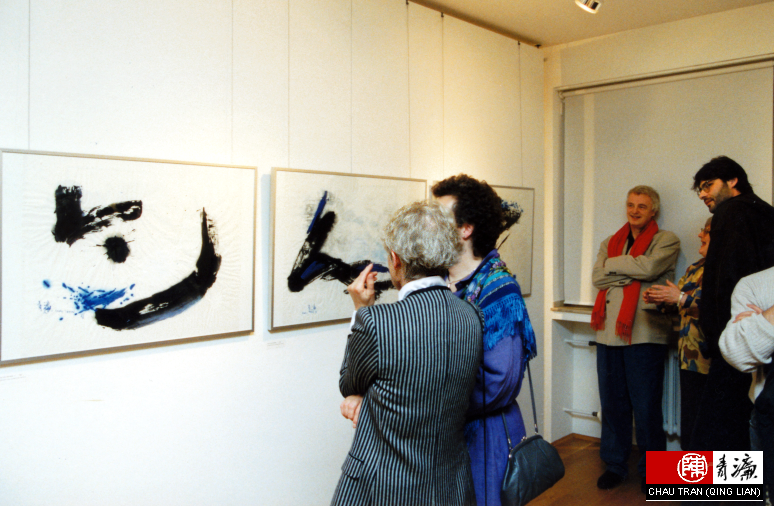
The artwork of Chau Tran (Qing Lian) brings many guests to talk with each other.
|
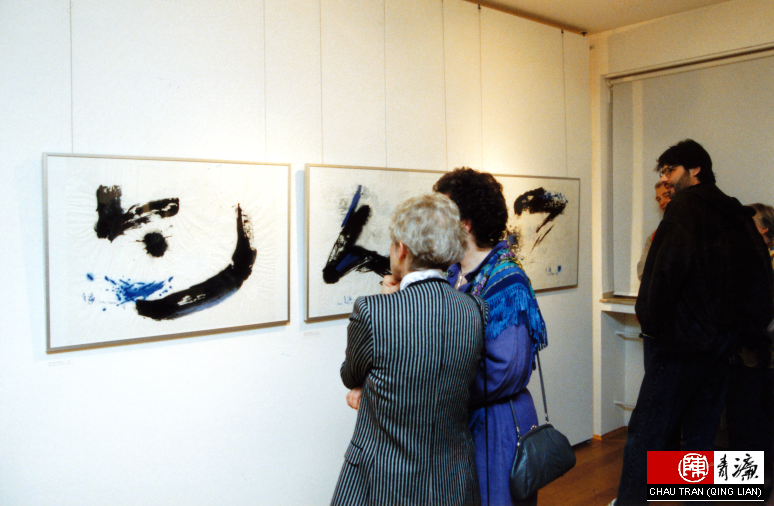
|
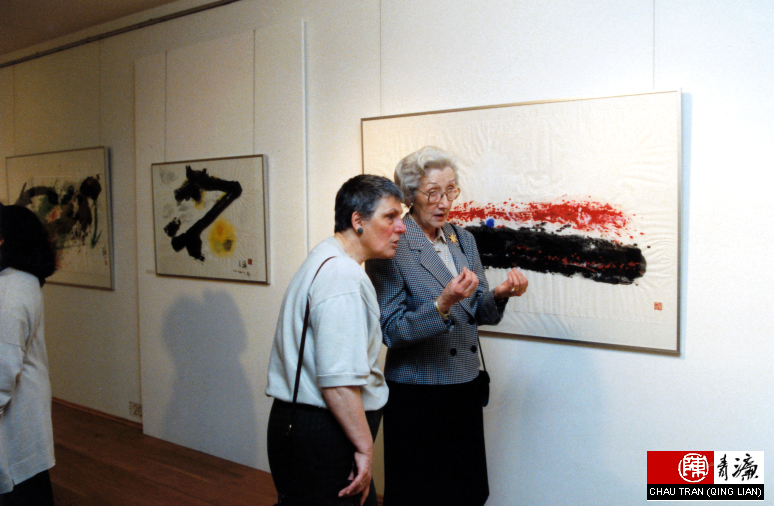
In the focus of the watching guests the painting "Yellow riddle (Evolution)" (not visible on the photo)
|
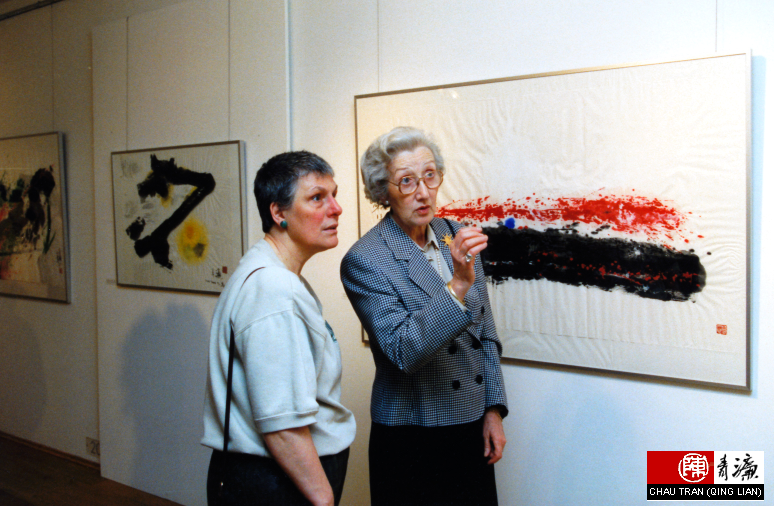
|

|

The painting "Yellow riddle (Evolution)" brings many guests to talk with each other.
|
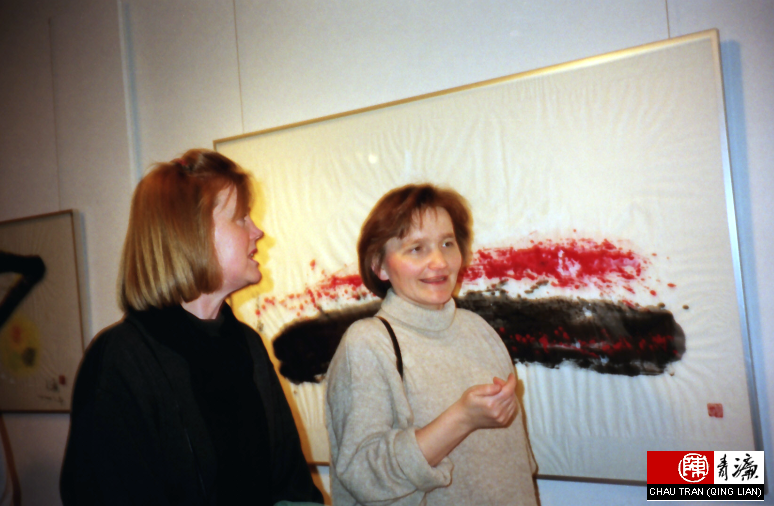
|
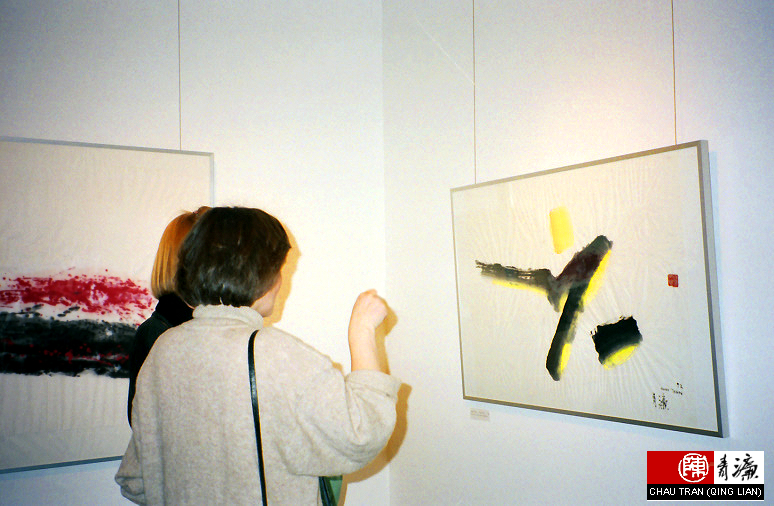
The work "Yellow riddle (Evolution)", one of many favourite paintings of the guests.
|
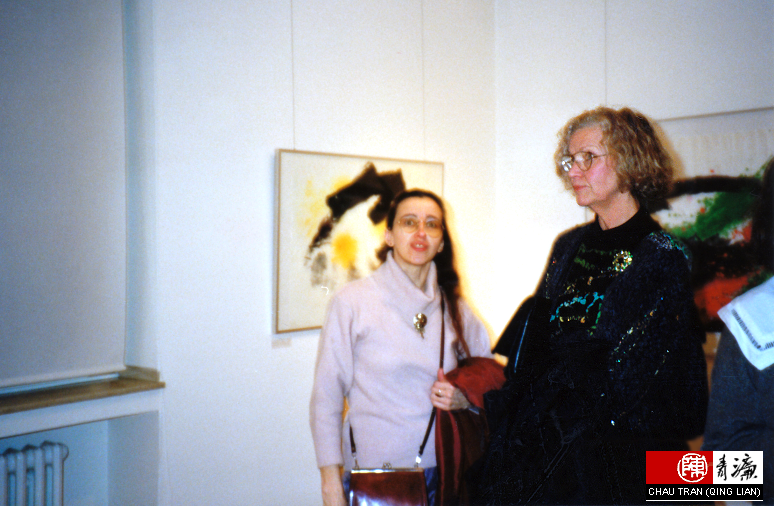
|
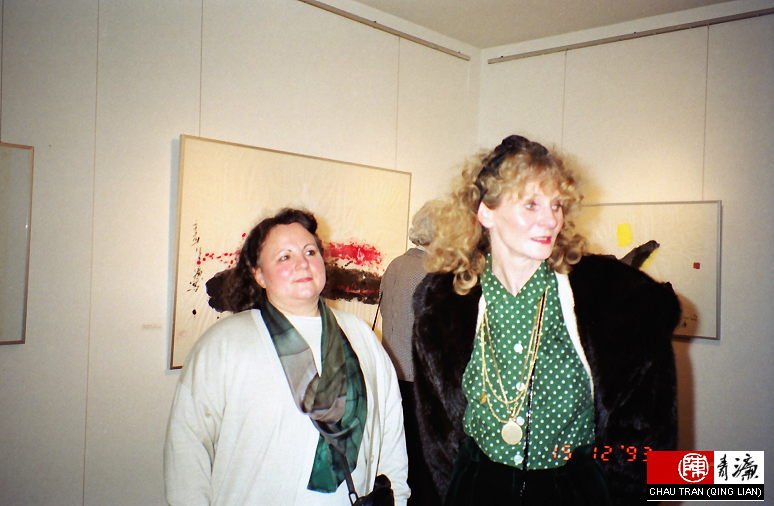
|
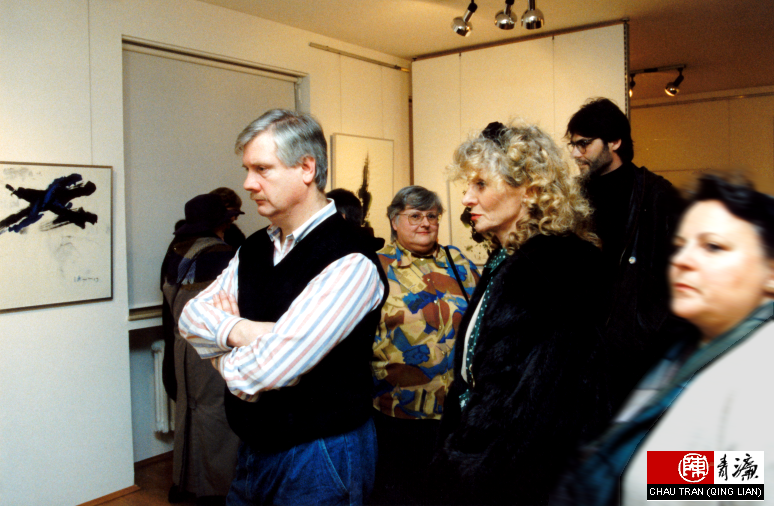
|

|
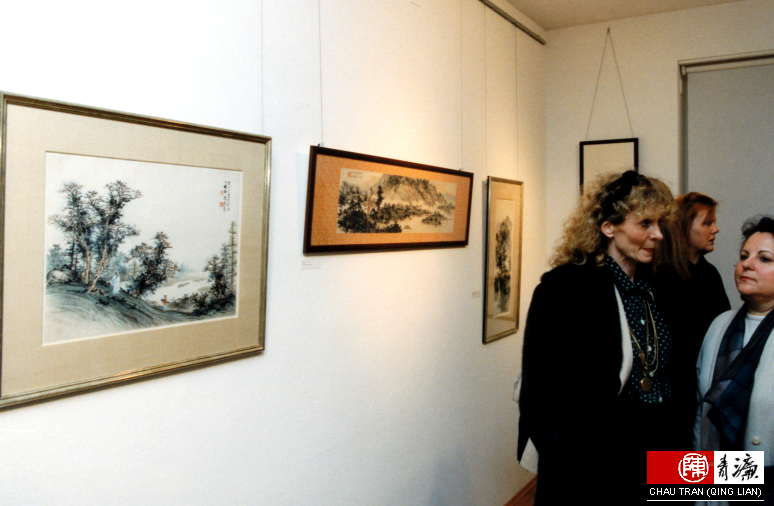
|
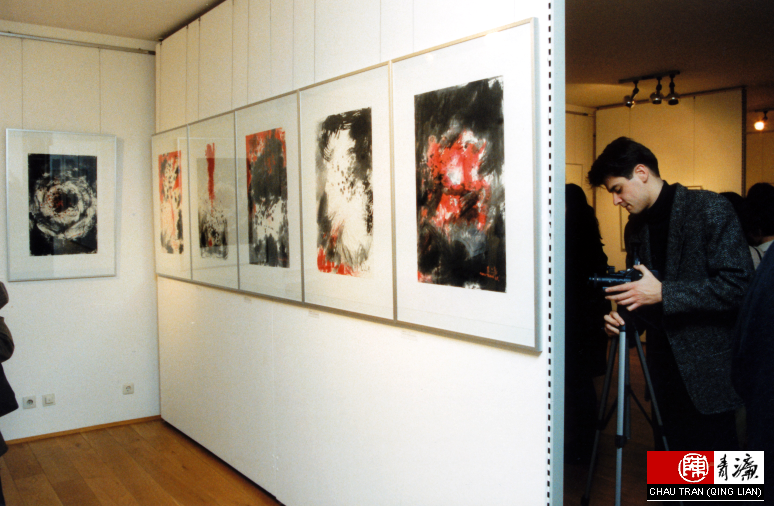
The six paintings of the series "Habitat - Yearning" of Chau Tran (Qing Lian) arose in the year 1988.
|
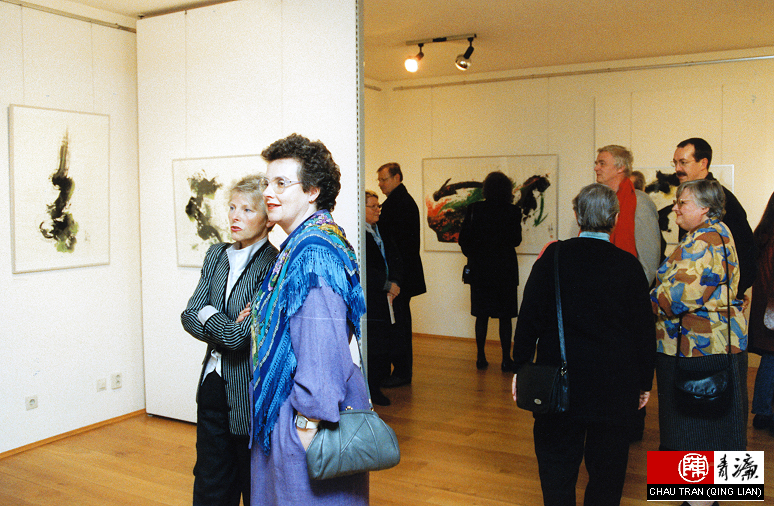
|
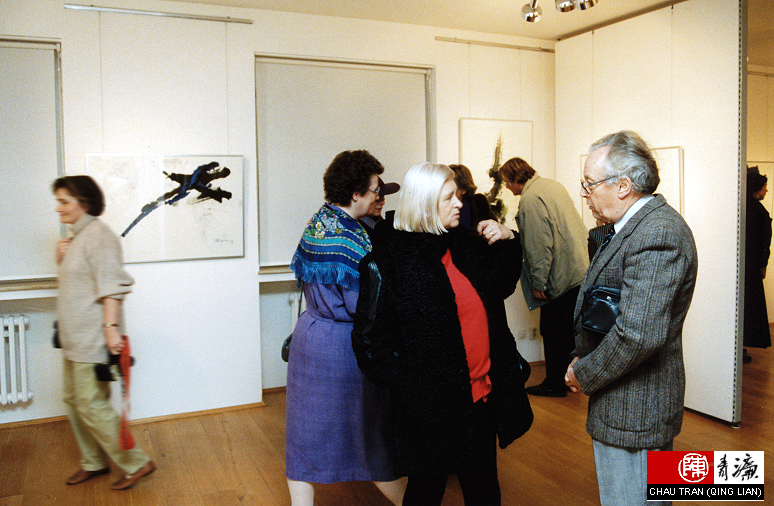
|
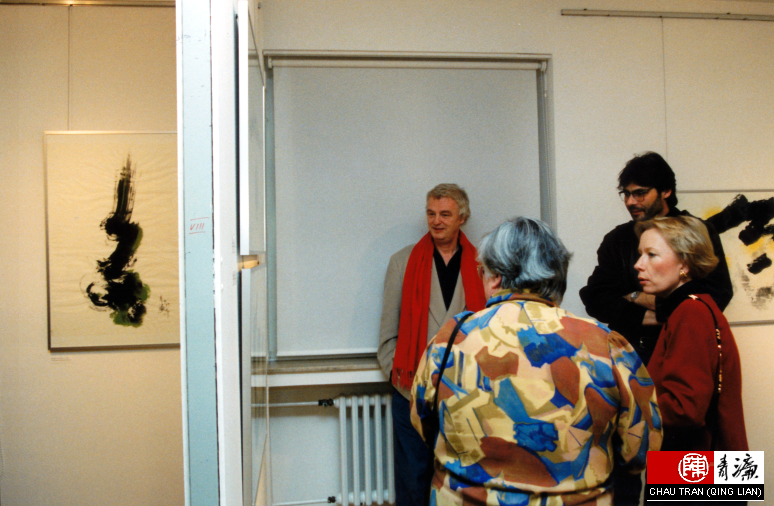
|
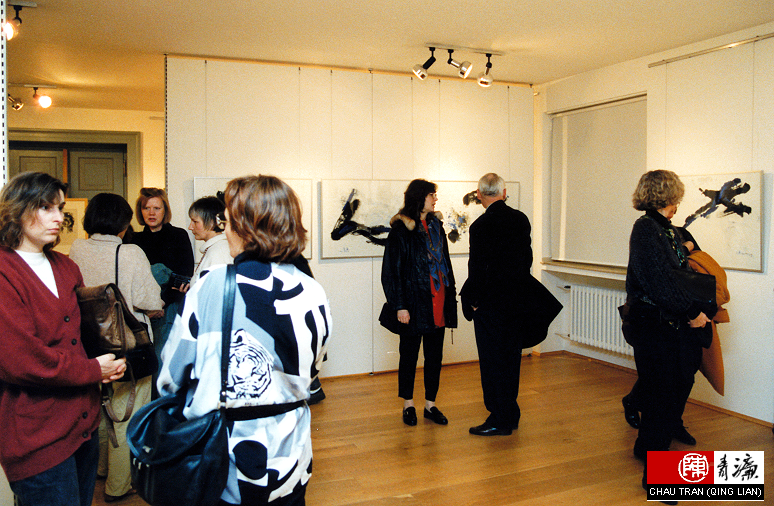
|
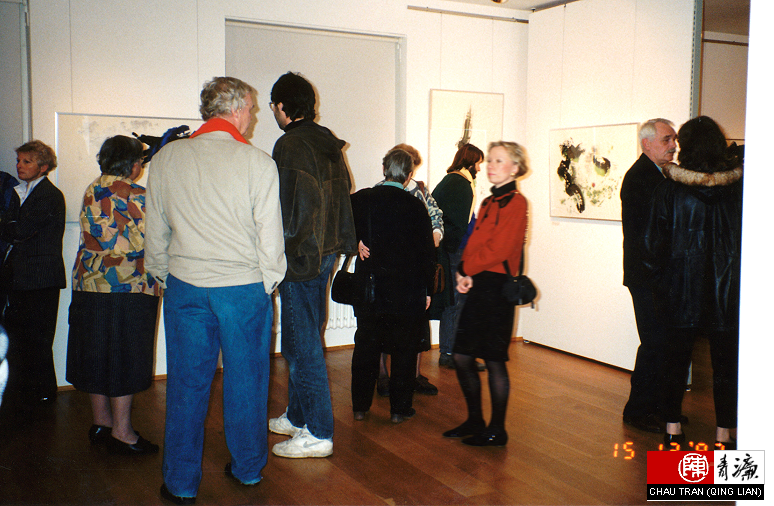
|
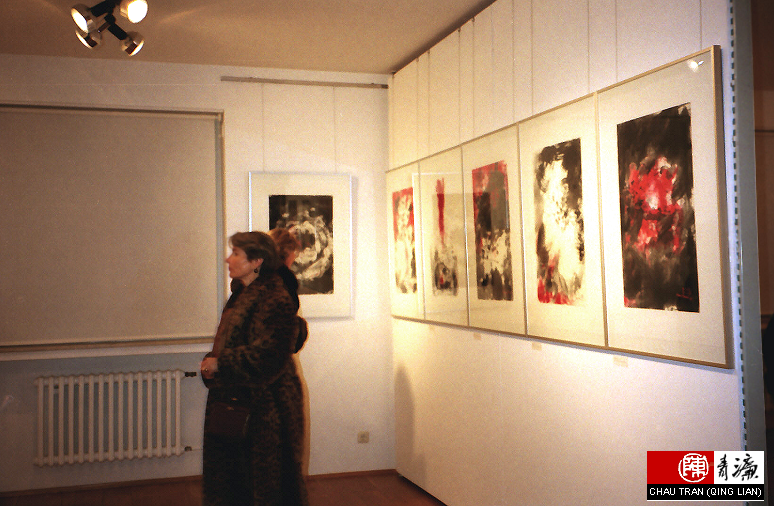
This observer focuses the four traditional chinese paintings, which arose between the years 1969 and 1971.
|

Many guests stay with the artwork until late evening, shortly before the closure of the Stadtmuseum Düsseldorf.
|
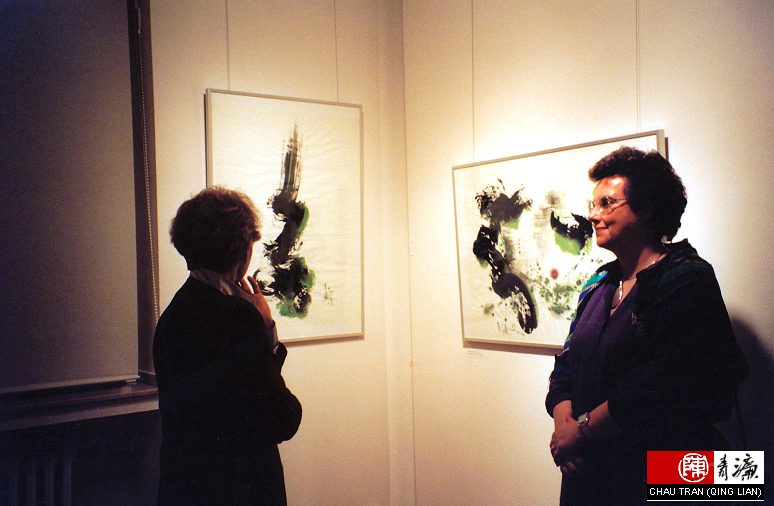
|
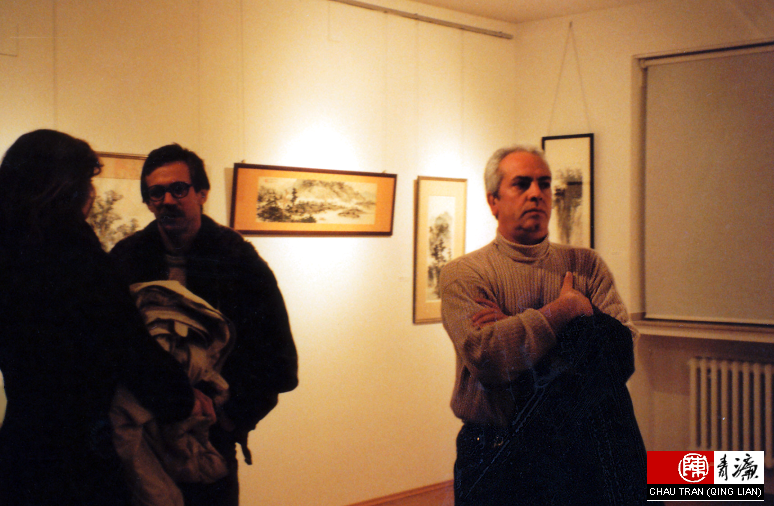
|
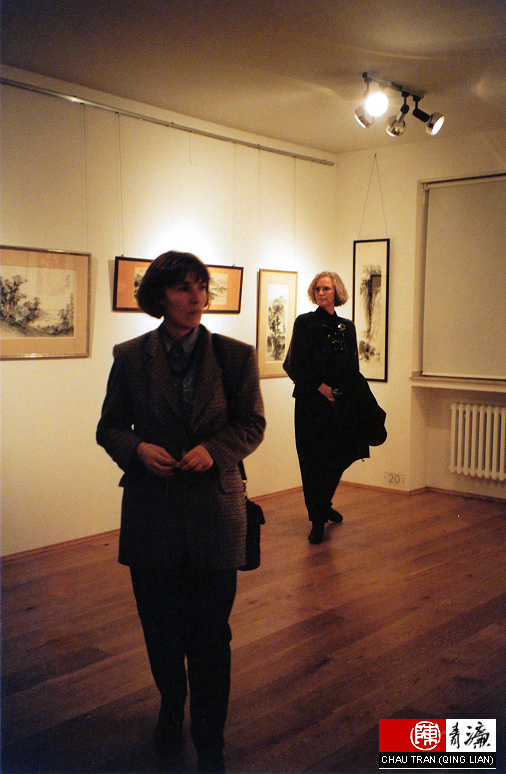
|
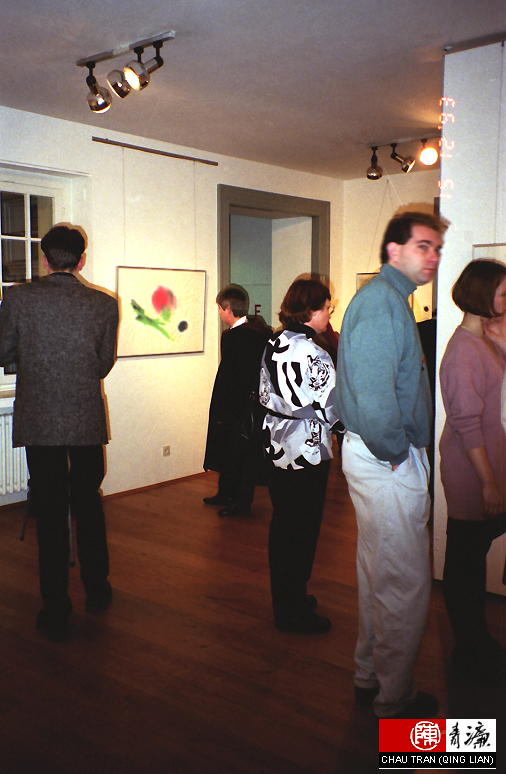
|
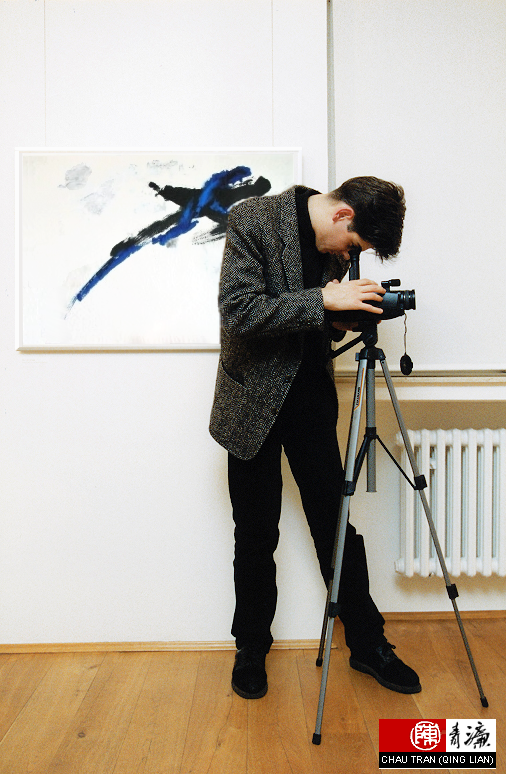
The painting "Power of hope". . . . . . . . . . . . .
|
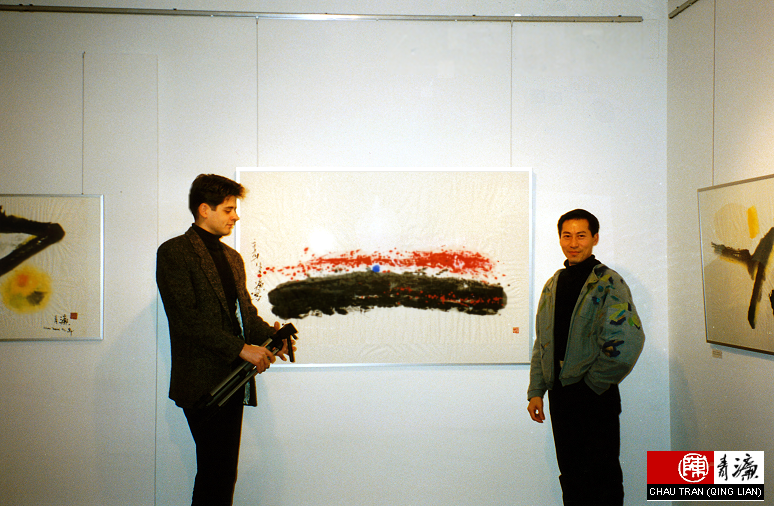
. . . . . . . . . . . . . . . . . and "Landscape of feelings".
|
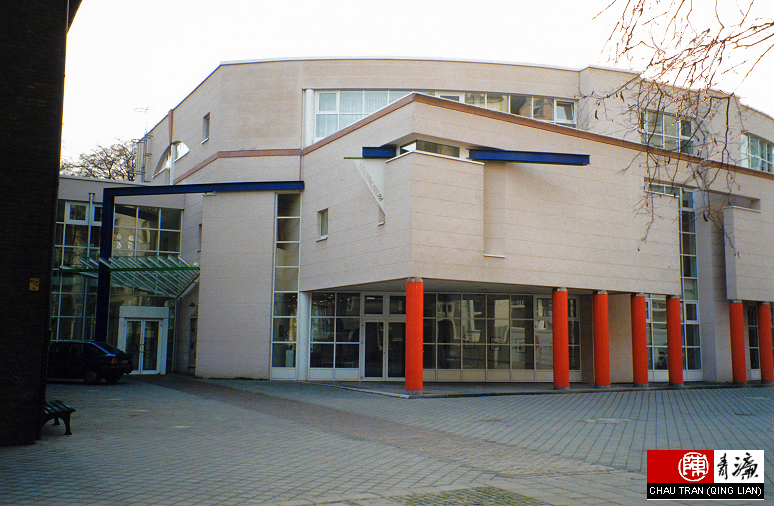
Stadtmuseum Düsseldorf, modern architecture in combination with the historic Palais Spee. On the photo the main entrance.
|
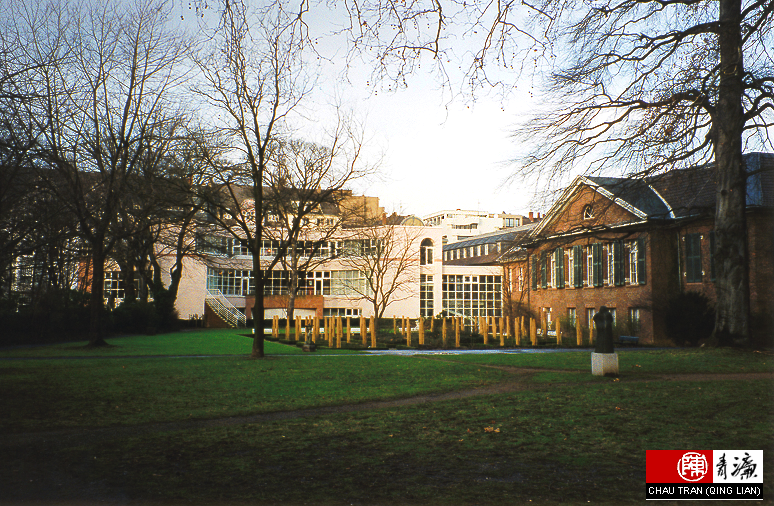
Stadtmuseum Düsseldorf, gardenside, right Palais Spee.
|




